

AUTUMN COLOR
It happened sometime last week, I woke up at the usual time and looked out the window, like every other morning. In the gray pre-dawn light I was greeted by wind driven rain, and barren black tree branches swaying wildly back and forth. Instantly, a sad feeling came over me. Autumn was over.
Sure, the calender says it's fall for five more weeks, but at that moment it unofficially ended. It's not like you couldn't see it coming, the temperature was dropping, the crisp breeze had turned into a biting wind, and the gaudy foliage was fading to more somber hues with each passing day. When the sun went down the night before, though, there were still plenty of leaves on the trees, and the hope of another colorful autumn day. But overnight it all changed, it always seems to happen that way.
For as long as I can remember, fall has been my favorite time of year. No surprise really, autumn in New England is pretty spectacular. I've always liked the cooler weather, fall sports, apples, cider and just about everything else that goes with the season. As a photographer, the spectacular colors and softening light create seemingly limitless picture possibilities, as well.
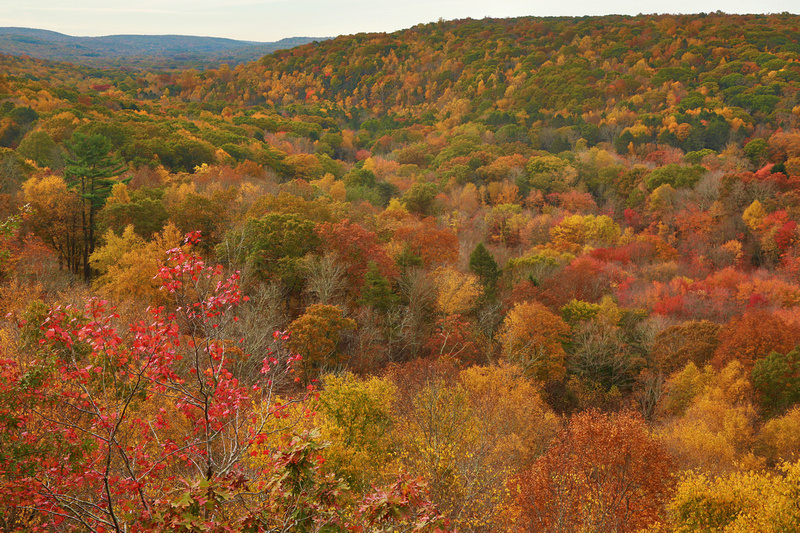

Every autumn I spend many hours trying diligently to capture the color and beauty I see all around. The pictures always seem to fall a little flat, though, photographs rarely outshine nature itself, or images captured in the human eye and mind. But that doesn't keep me from trying, and the results aren't all bad.
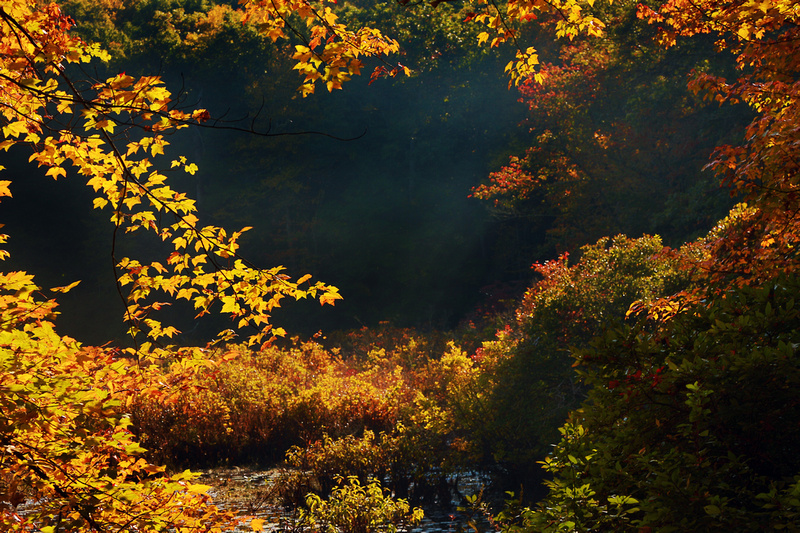

I'm usually most underwhelmed when I first go through the photos, because they don't live up to my memory of the scene. As time goes by and the mental images fade, the photographs tend to grow on me. Shooting fall foliage depends so much on the light. In order to capture the rich colors, I shoot mostly on overcast days, a holdover from the film days. That helps keep the colors saturated, but pictures can look dull and flat. It's harder to capture the brilliant colors on a crisp sunny autumn day, and I rarely shoot foliage in direct sunlight, although I do sometime like the results of backlighting, like the picture above. Another problem I have is, that despite the beautiful colors, editing foliage pictures is very laborious for me and takes away a lot of the fun of the capturing the beauty of the season. With stationary subjects, it's easy to take lots of different views, but I find it painstaking work to choose between them.
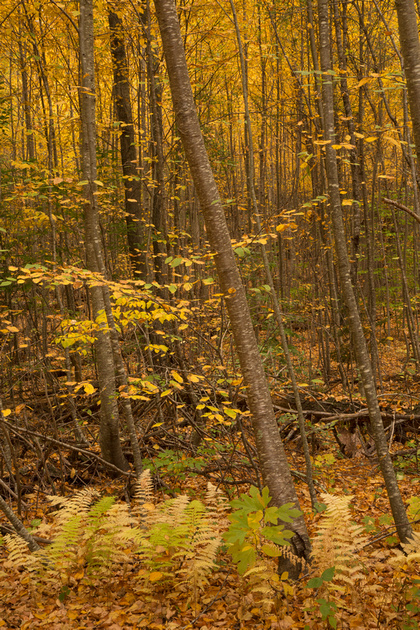

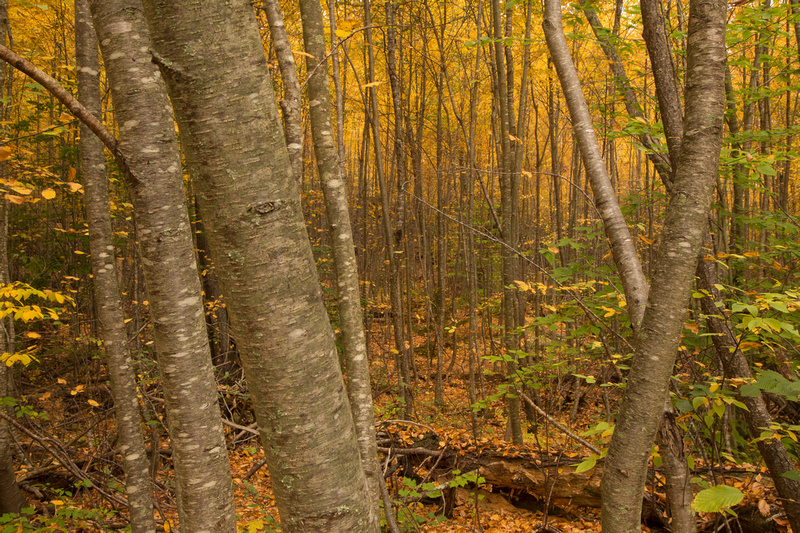

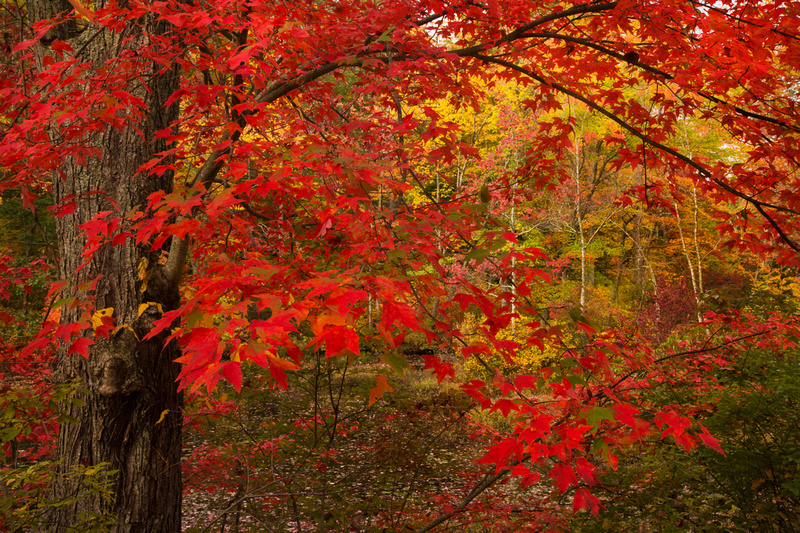

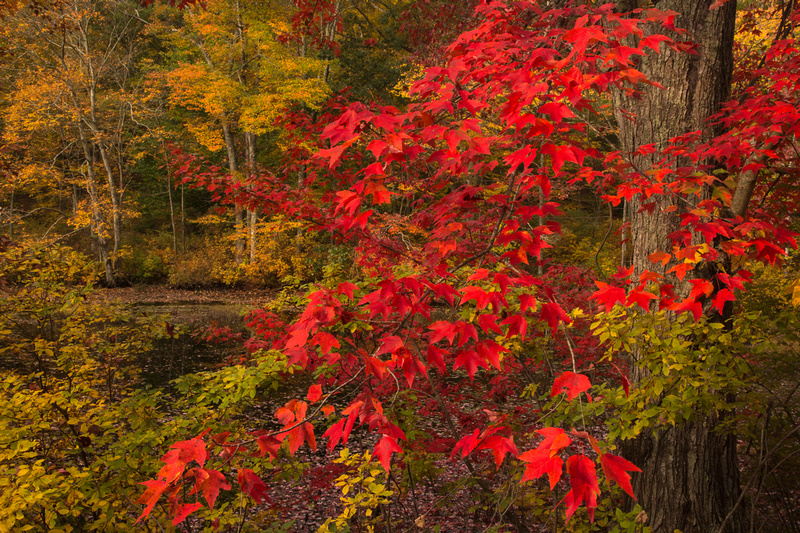

I also like to vary my subjects. Trees and foliage are everywhere, but I like to find the equally colorful but less obvious plants, like Sumac and Virginia Creeper. One of those is plants is Glasswort, which grows in salt marshes and turns deep red in the fall. It really stands out to me and every year I shoot it, though I'm rarely happy with the results. This year I photographed a few nice patches of Glasswort and pushed the processing a bit to get the pictures below. The saturated colors in the photographs are a bit exaggerated, but that's how I remember seeing it.
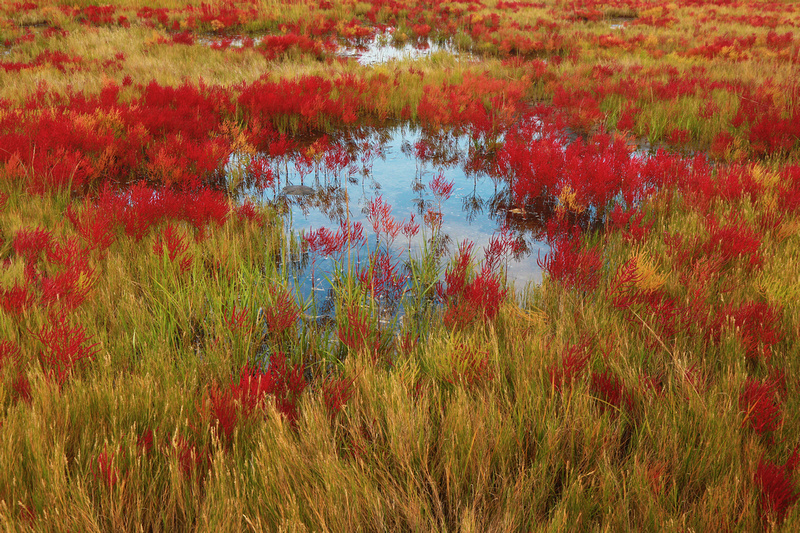



When I find a patch of Glasswort in a marsh, I keep checking it hoping to photograph a bird or animal walking through it, but it never seems to happen. This year I finally found a Great Egret that would feed in such a spot, and even though it was a little past peak, the red plants added a splash of color to the otherwise ordinary pictures.
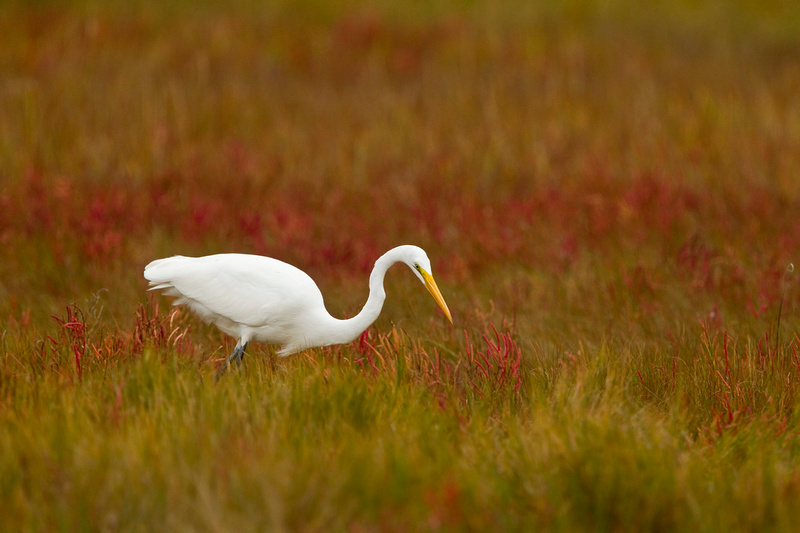

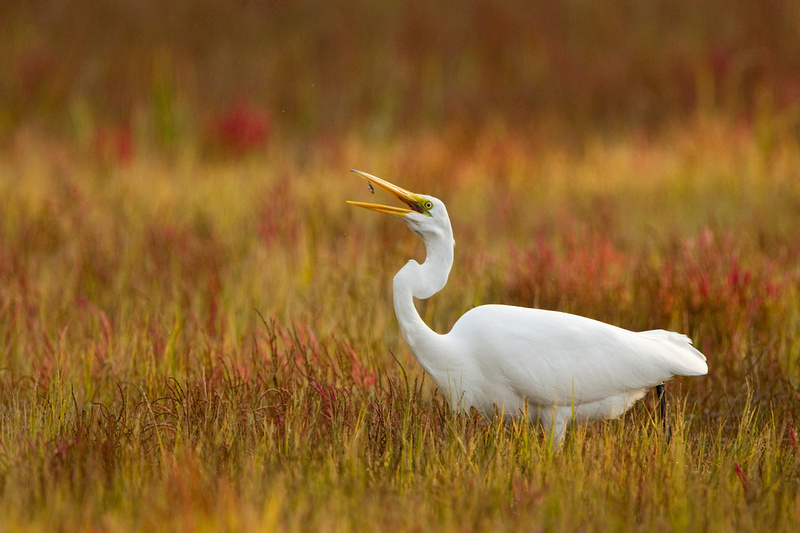

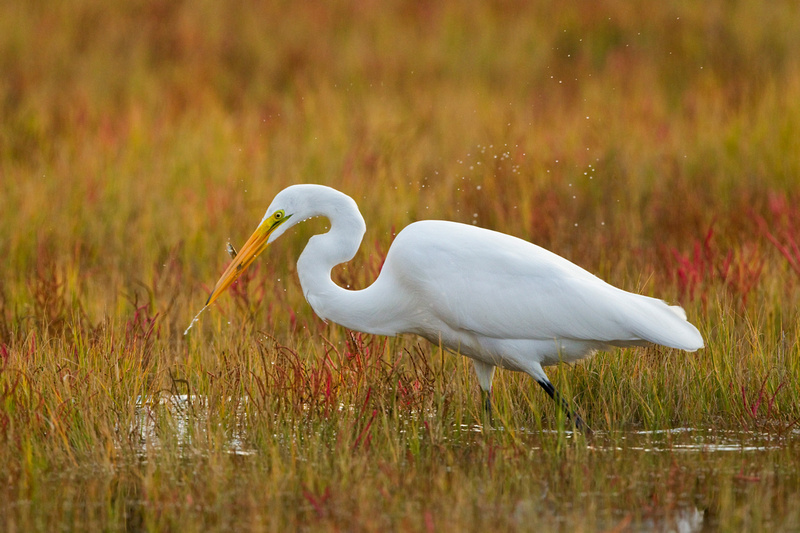

Since taking an interest in birds, I've come to appreciate fall for yet another reason. With migration in full swing, the variety of birds in Connecticut is great. Whether it's a rare bird passing through the state or a common one found year round, photographing birds with a backdrop of brilliant fall foliage or even a hint of autumn color is always a bit special, and has resulted in some of my favorite pictures over the years. It's also easier and more enjoyable for me to work on pictures that capture the colors of the season, but also have an interesting subject as the focal point.
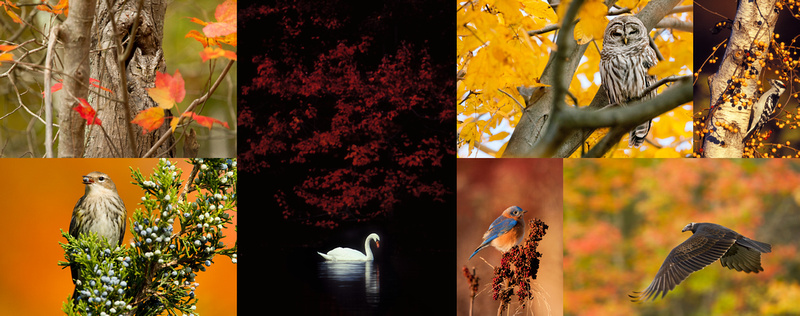

This fall I spent quite a few mornings working in the community gardens at Bauer Park in Madison. In past years I've photographed there in early September, because the flower gardens attract a good variety of butterflies. With reports of some uncommon birds being seen there this October, I stopped to see if I could get a look at them. I did get to see most of the better sightings in my fist couple visits, including Blue Grosbeak, Grasshopper, Vesper and Lincoln's Sparrows, but didn't get any good pictures of them. What kept me coming back was the colorful autumnal backdrop that had all kinds of picture potential.
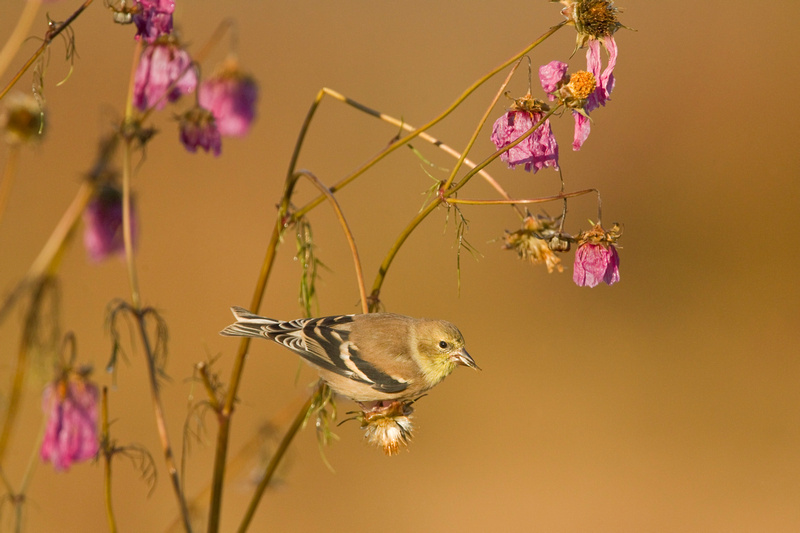

I have adopted "ride the hot hand" strategy for photography that has worked out many times over the years. When I find an area where I see good stuff, and get some good shots, I keep going back to it until it cools off. Sometimes these are pretty odd locations, like a stretch of a residential street that I drove through or a commuter parking lot. I may have never seen anything there before, and might never again, but for a week or two the area was hot spot. Bauer Park is a more likely spot, but when I started having some luck there, I kept going back. Most of the birds I photographed were common ones, plain looking goldfinches and sparrows that you could find anywhere. But, feeding on the sunflowers, overgrown weeds gone to seed and fading flowers in the garden, they seemed to capture the color of fall perfectly.
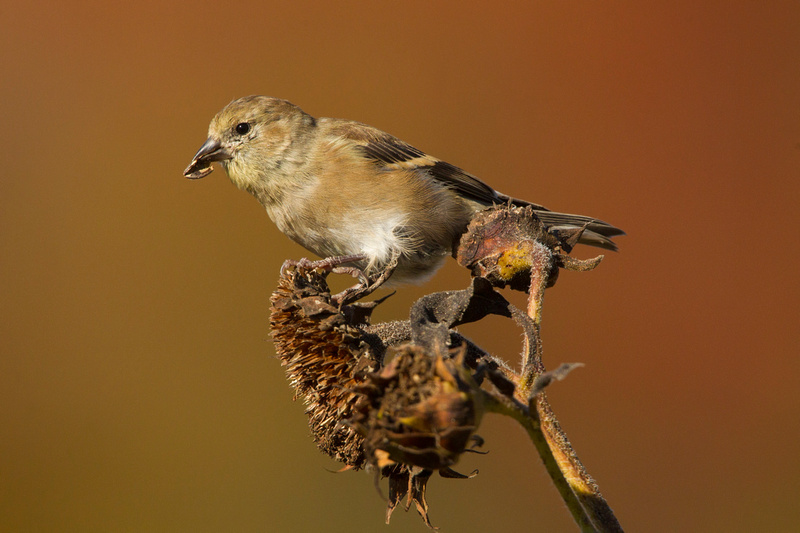

Savannah Sparrows were most plentiful, but their coloring and feather patterns are so variable that they always drew a long look. They also seemed to blend in perfectly with the autumn backdrop.
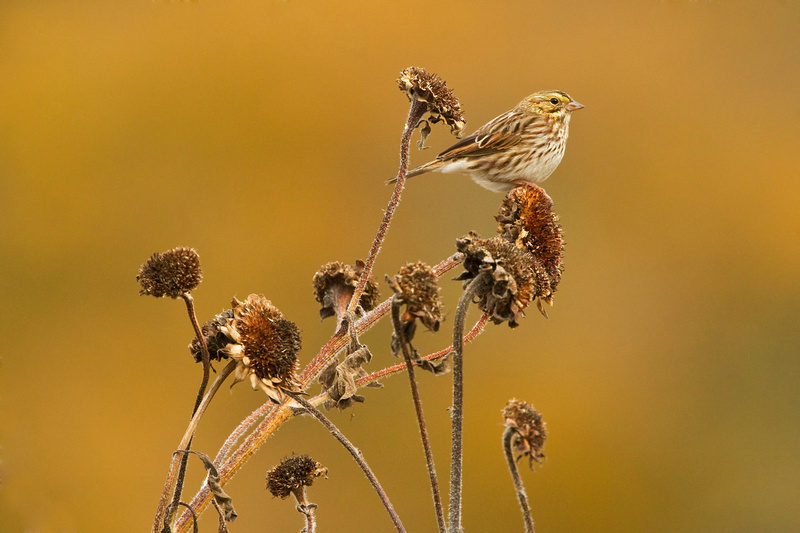

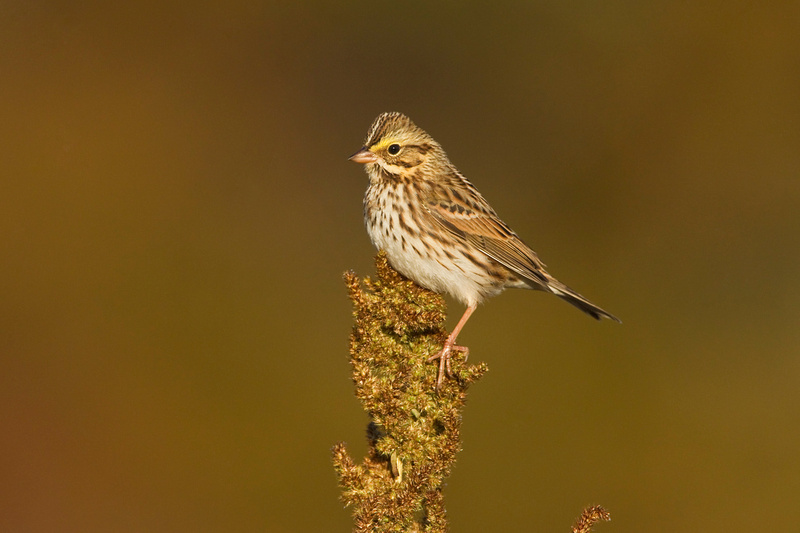

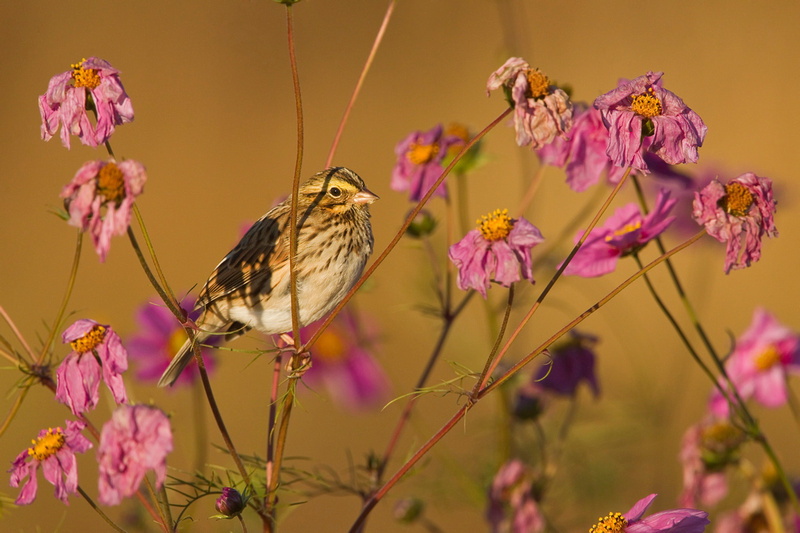

Among the most colorful birds there were Palm Warblers. They were not feeding on seeds at all, but hopping through the leftover vegetable plants looking for bugs.
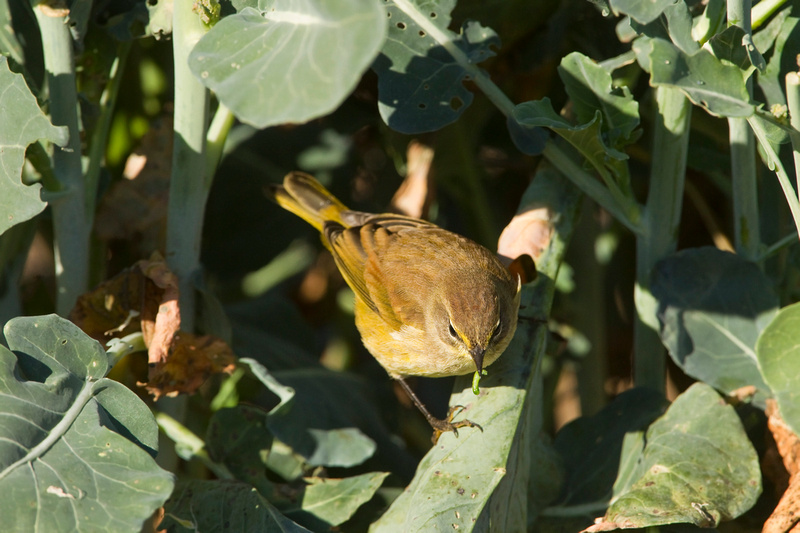

These Palm Warblers were the yellow eastern race birds that also seemed to match nicely with the fall color scheme.
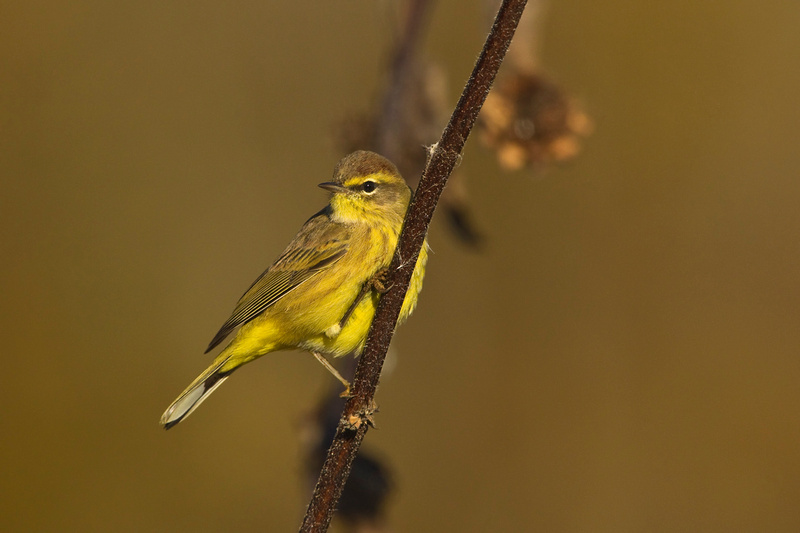

One day, from across the garden I kept seeing Eastern Bluebirds landing on the sunflowers. I moved closer, wondering if they were actually eating the sunflower seeds, too. As I got close enough, I could see that it wasn't the seeds they were after, but insects, like the spider caught by this male bluebird.
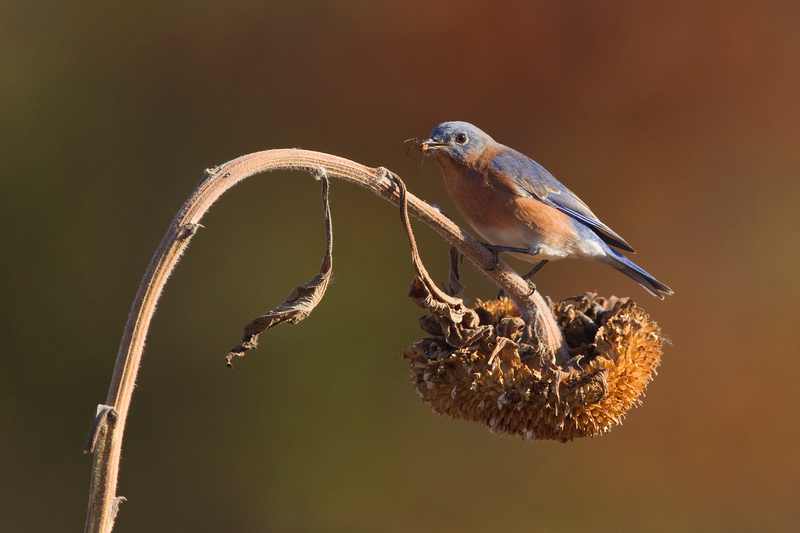

Eventually, this hot spot cooled off, like they always do. And a couple weeks later, a rainy, windy morning brought this colorful season to an end for another year.
FALL MIGRATION
Like the spring, fall migration is usually a pretty interesting time of year, with lots of new birds, and maybe a few surprises to look forward to. The early part of the season was a bit lackluster, with shorebird and hawk migration falling a little flat.
Most years the fall migration kicks off in mid summer when the first shorebirds arrive from their nesting grounds farther north. I'm usually not in "migration mode" that early and still working on the resident birds until the end of August. This year was a bit strange, though, because there were very few of the expected terns gathering along the Connecticut shoreline. While looking for Roseate Terns, which I usually see by July, I noticed that it was hard to find any terns in the southeastern part of the state at the end of the summer.
Turning to other subjects, it was a good season for the many herons and egrets staging in local salt marshes. These aren't the most exciting subjects for me, but they are plentiful and can be fun to watch as they show off their various fishing techniques. At Rocky Neck, a young Green Heron used a stealthy approach, stalking its prey.
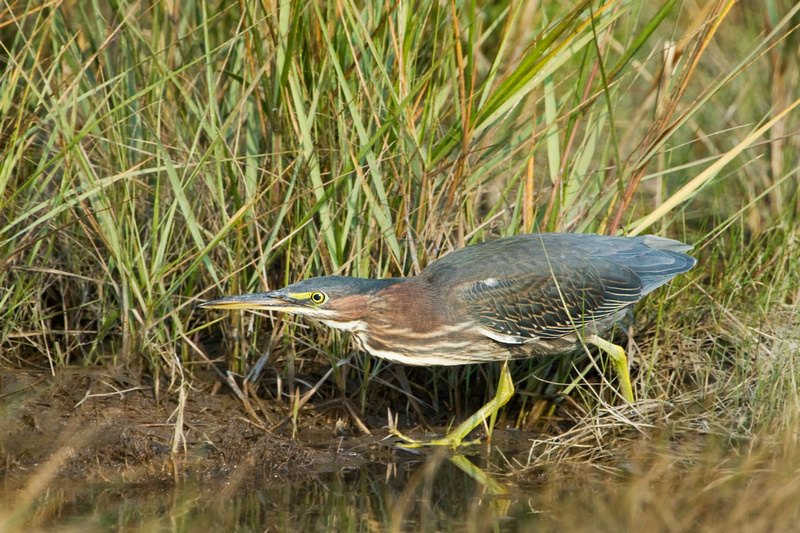

Great Egrets congregated in tight groups around productive pools in the Hammonasset salt marshes, spearing small fish in the flooded Spartina grass.
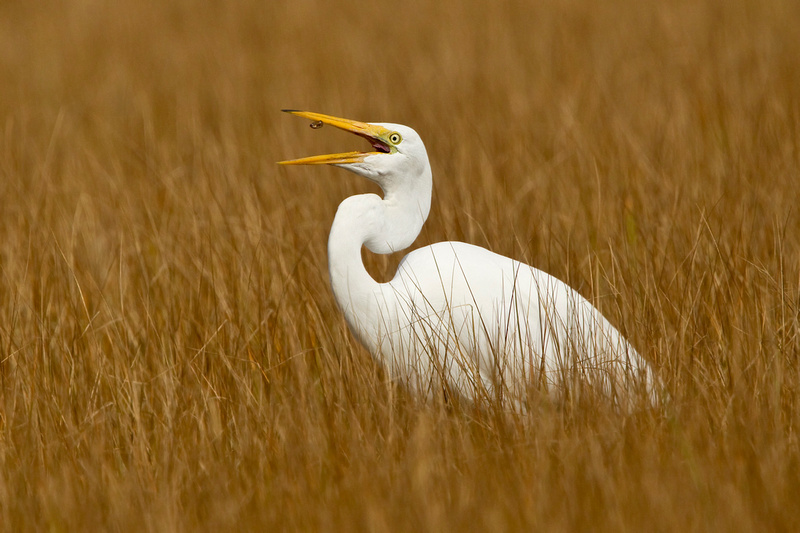

Occasionally, the close quarters led to noisy outbursts as dominant birds battled for elbow room in the best locations.
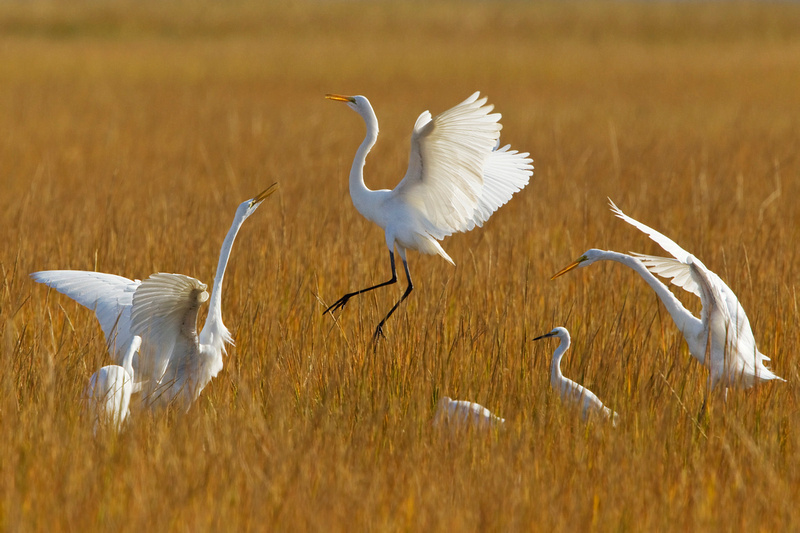

Immature Little Blue Herons usually joined them in the golden grass.
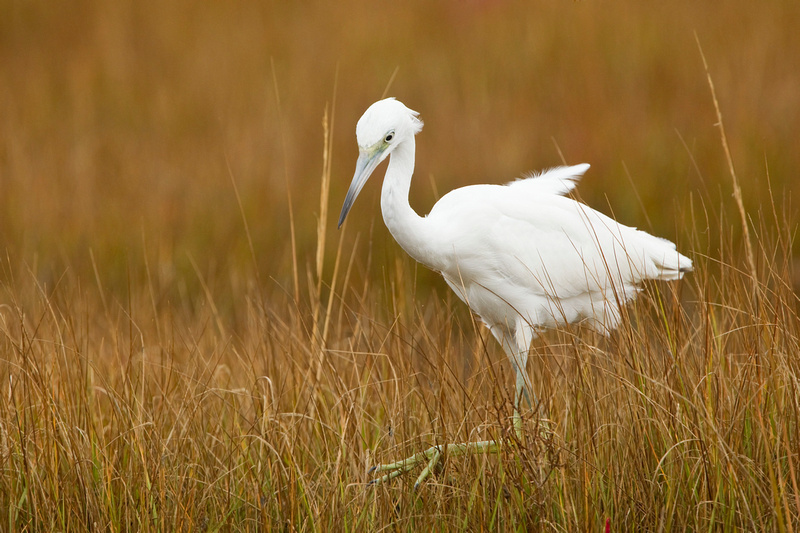

In Old Lyme, a Snowy Egret used a technique I have never seen before. Standing motionless in the shallow water, it seemed to be blowing bubbles or disturbing the surface of the water with its bill. It stayed in this position for more than ten minutes, stabbing into the water twice in the time I watched it, coming up with a small fish on both tries. I'm not sure if the tactic was designed to attract fish to the egret or to obscure the water surface so fish could not see the danger above. Either way, this patient method seemed far less productive than the more active stalking I'm used to seeing them do.
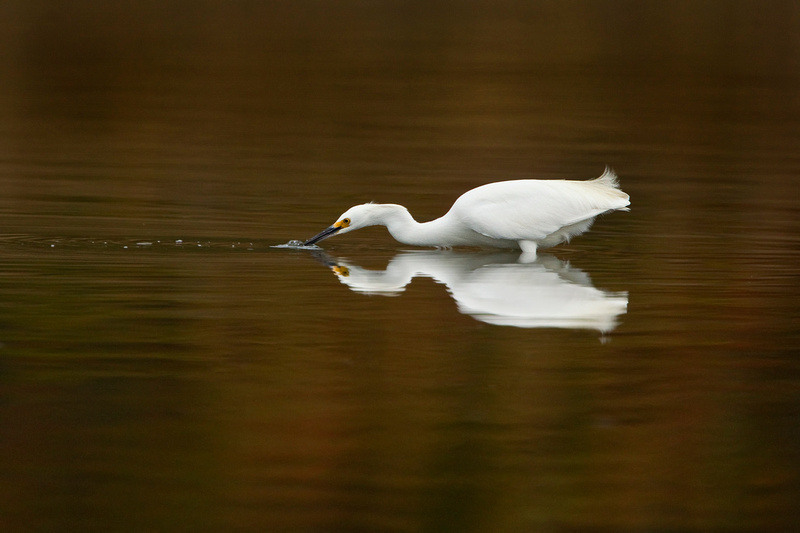

Much was made of the DEEP filling in the potholes in the parking areas at Hammonasset Beach State Park this summer. These holes would fill with rain water and attract shorebirds in fall migration. Well, rain was so scarce the past few months that there were very few puddles to be had, anyway. Shorebirds still pass through Connecticut, but the puddles create easily accessible spots to view and photograph the birds. Without the puddles, birds stay farther out in the marshes, often hidden in the grass. Because of this, I saw and photographed fewer shorebirds this fall than in the past few years. Ironically, my best shorebird sighting of the fall was an Upland Sandpiper at Hammonasset that I photographed standing in one of the hydro seeded "filled in" areas.
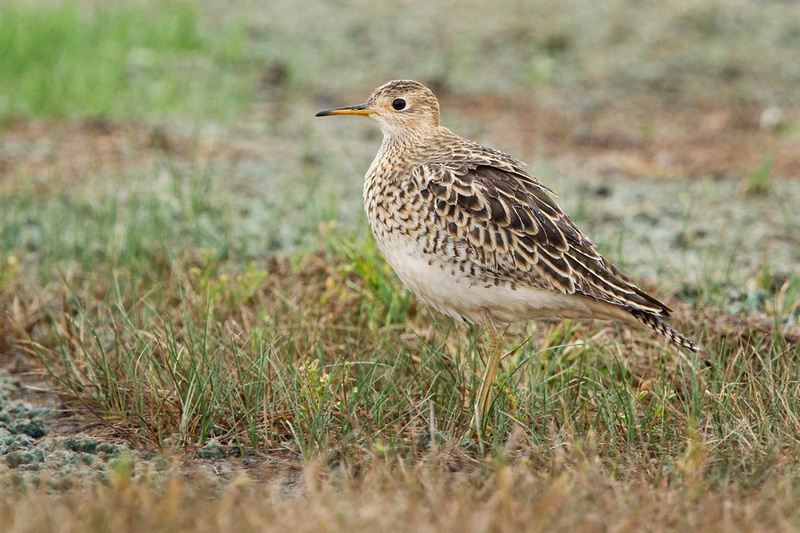

The same evening, there was a Short-billed Dowitcher in a tiny puddle a short distance from the Upland Sandpiper at the bottom of the Nature Center parking area.


As the few puddles quickly dried up, the shorebirds were noticeably fewer (except for the dozens of Killdeer), although a couple American Golden Plovers stayed a few day feeding in the grass parking lots. This sharp looking juvenile seemed very tame, and as a friend and I lay on the ground photographing it one afternoon, it walked past us so close that we couldn't even focus on it.


It turns out there was a plentiful food source in the grass that the plover was feasting on. Grubs.
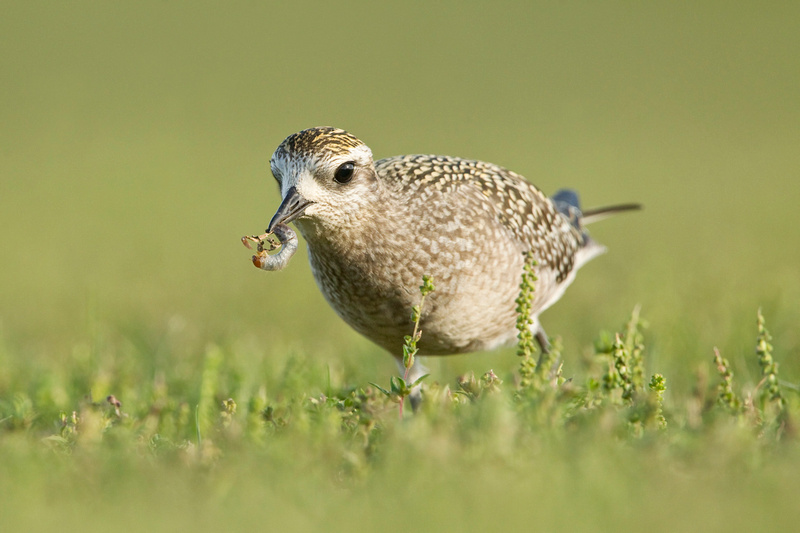

This plover stayed in the same area for a couple days, gorging itself on the plentiful bug banquet. American Golden Plovers breed in the high arctic and winter in central and southern South America. For a bird with one of the longest distance migrations, it's vitally important that they find these productive refueling stops along the way.
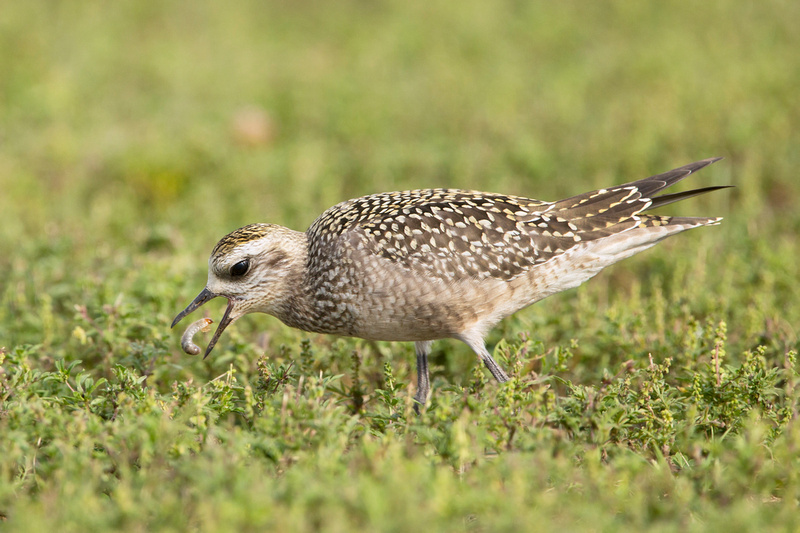

A week later an adult American Golden Plover stopped over for a couple days, this time in the west end of Hammonasset.


Despite the lack of rain, it turned out that a decent variety of shorebirds could be found feeding in the dry grass lots at Hammo, including Pectoral Sandpipers.
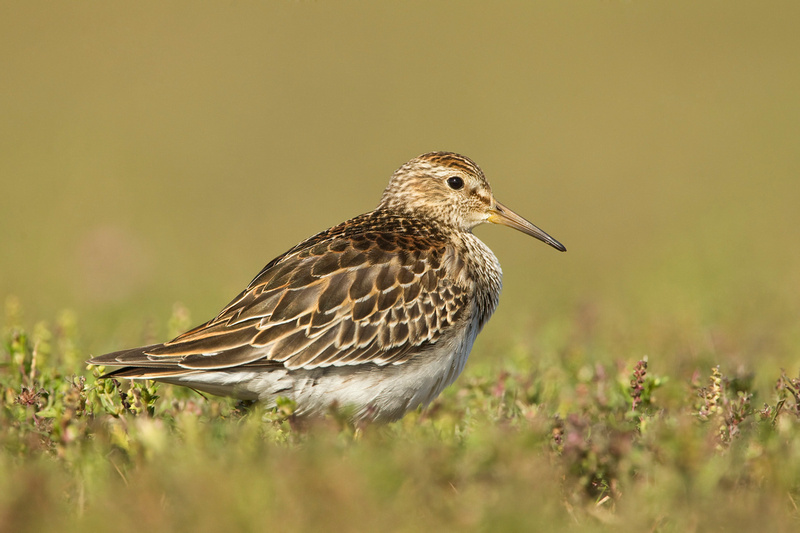

A juvenile (at left) and an adult White-rumped Sandpiper fed in the same area one day, allowing for easy comparative photos.


In tidal pools and pannes, the typical peeps and yellowlegs were plentiful .....
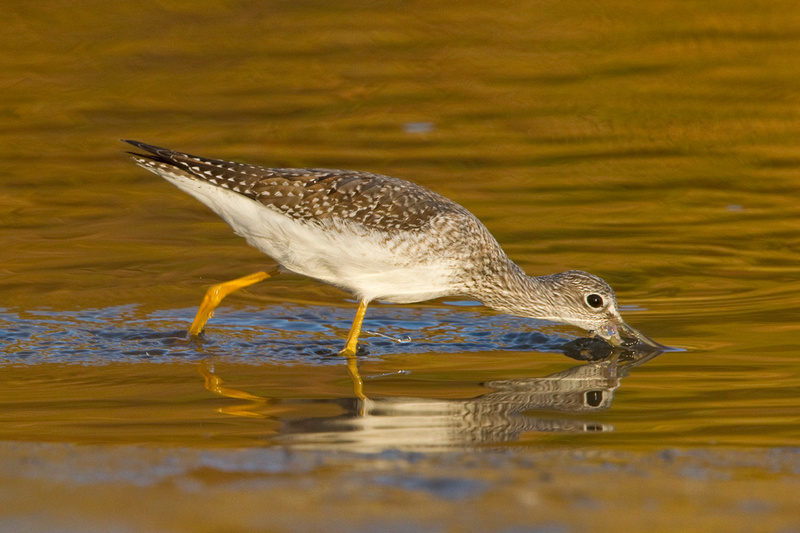

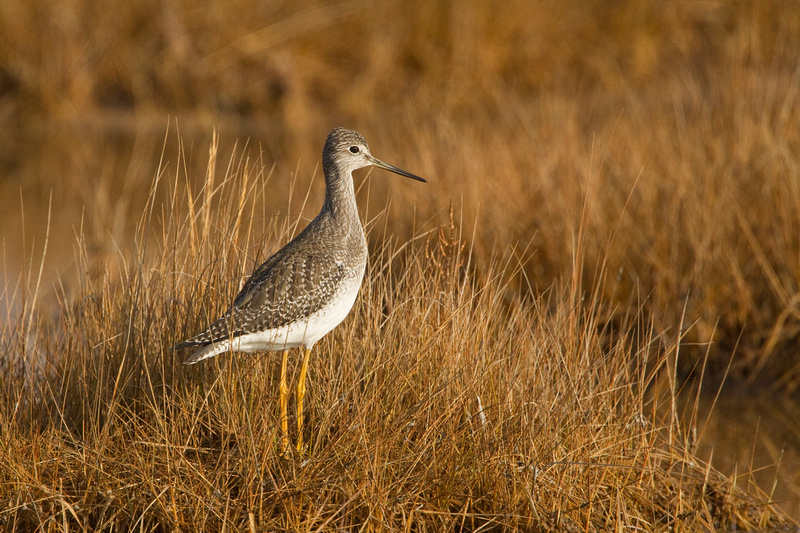

...... but despite searching for it for two days, I missed seeing the Wilson's Phalarope that was hanging out with the yellowlegs at Hammonasset in September.
Hawk watchers in Connecticut have described the raptor migration this year as disappointing, too, at least through mid-October. The lower numbers, I assume, are the result of fewer than normal cold fronts that produce good hawk flights. I've seen all the common migrants this fall, Kestrels, Merlins and Peregrine Falcons and Sharp-shinned and Coopers Hawks, but no unusual sightings. Getting pictures of hawks is always a challenge, but Cooper's Hawks put on a show this fall. The one below was chasing sparrows through the tall weeds at Bauer Park, and after coming up empty, popped up close by me to look for another potential meal.
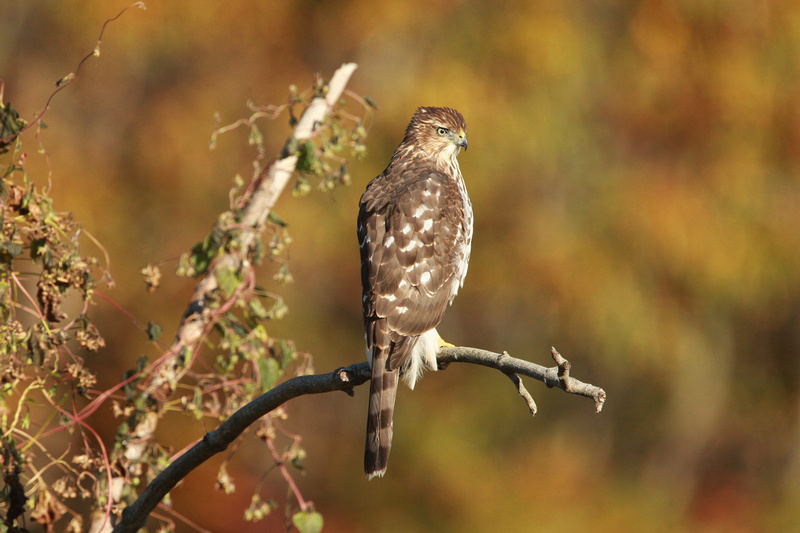

One day at Hammonasset, there were at least three immature Coopers Hawks flying around the west end, playfully jousting with each other and a dozen or so crows. They seemed oblivious of the small group of birders and photographers gathered around to watch them play.
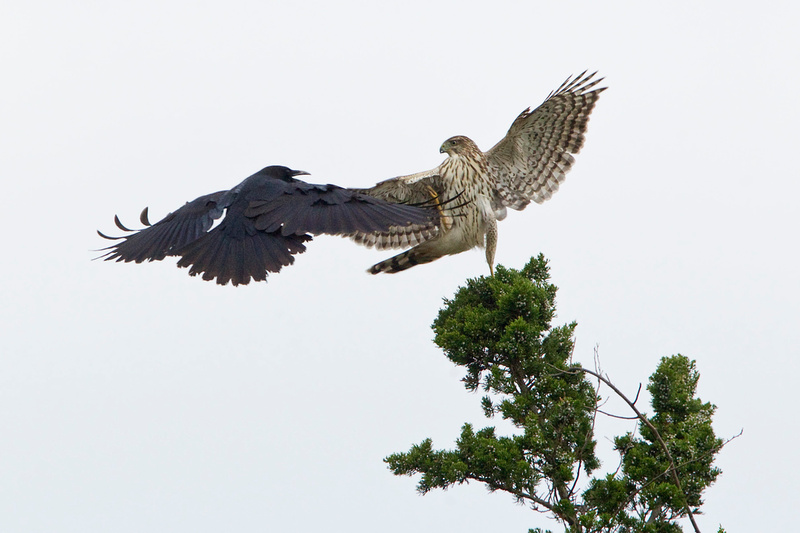

Unfortunately, the beautiful morning light vanished as the sun disappeared behind clouds just in time to put a damper (at least from a visual perspective) on the frolic.


I mentioned in my previous post that I didn't spend any time photographing migrating warblers at Bluff Point State Park this fall, and missed a lot of the warblers I usually see there. This year I tried some different locations for songbirds, seeing a much smaller variety of migrant warblers, but plenty of the common ones, especially Palms and Yellow-rumps.
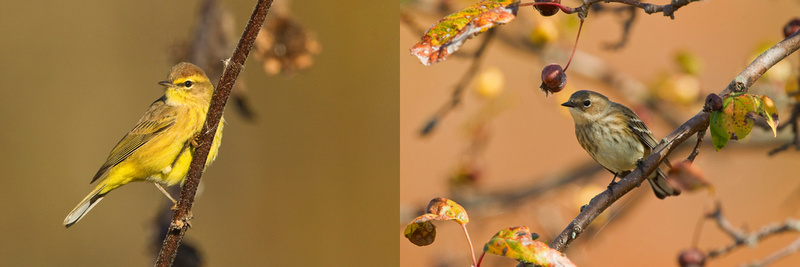

Kinglets, both kinds, have been plentiful this fall, too. Golden-crowned Kinglets often feed by working through the outer branches of cedar trees and often will allow very close approach as they appear totally focused on their task. Despite this, the tiny, fast moving birds are difficult to get good pictures of as they flit from branch to branch, often leaving me with shots of blurry feet and tail feathers exiting the frame. Finally, this year I got a cooperative kinglet. After catching a (relatively) large moth, this Golden-crowned Kinglet moved to an open branch and spent at least a couple minutes in the same spot, working to dispatch it. My favorite picture shows the hairs and dust flying as the bird shook the moth violently to dislodge the wings.
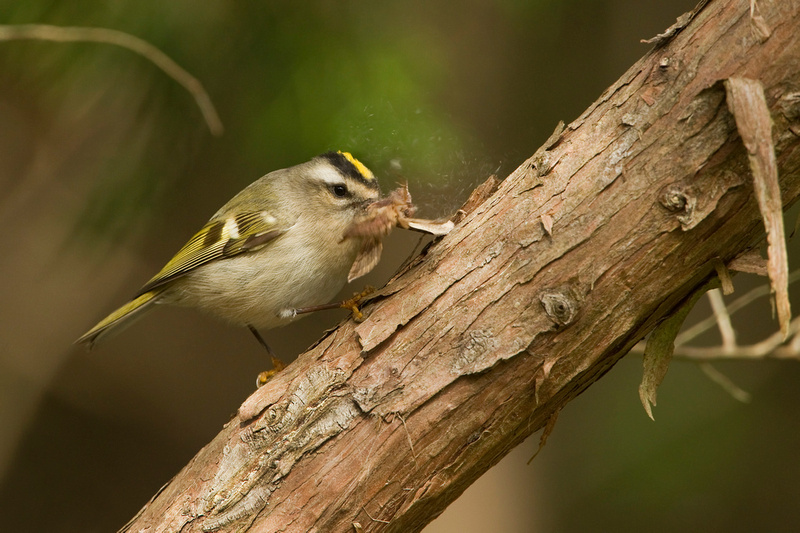

I spent a lot of time this fall working in open and brushy areas. At Harkness Park I got a distant look at a molting Indigo Bunting and was able to see the Blue Grosbeak reported at Bauer Park on a couple different occasions.


Finding the grosbeak, at times, could be quite a challenge, as it fed in the tall weeds. This shot shows how well it blended in with the surroundings.


As October arrived I began to concentrate on the many species of sparrows in transit through the state, some on their way farther south, others arriving to spend the winter. These LBJ's (little brown jobs) are often overlooked (at least by me) so I decided to concentrate on them for a while this fall. It helped that some of the less common ones were being reported from areas close by, including Grasshopper, Lincoln's and Vesper Sparrows form Bauer Park, all of which I was able to find there. Despite carefully studying scores of Chipping Sparrows, I never turned up a Clay-colored. Below is a sample of the different sparrows I was able to see this fall.
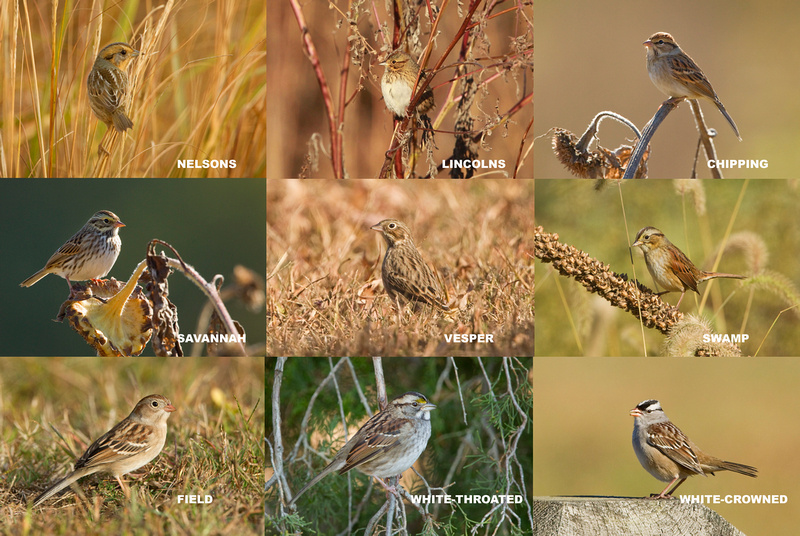

The best sighting I've seen so far this fall was a handsome Lark Sparrow found by a birder in the Hammonasset camp ground. It was feeding in the open grass, in the company of a mixed flock of sparrows, including White-throated, White-crowned, Field, Song, Swamp, and a Vesper.
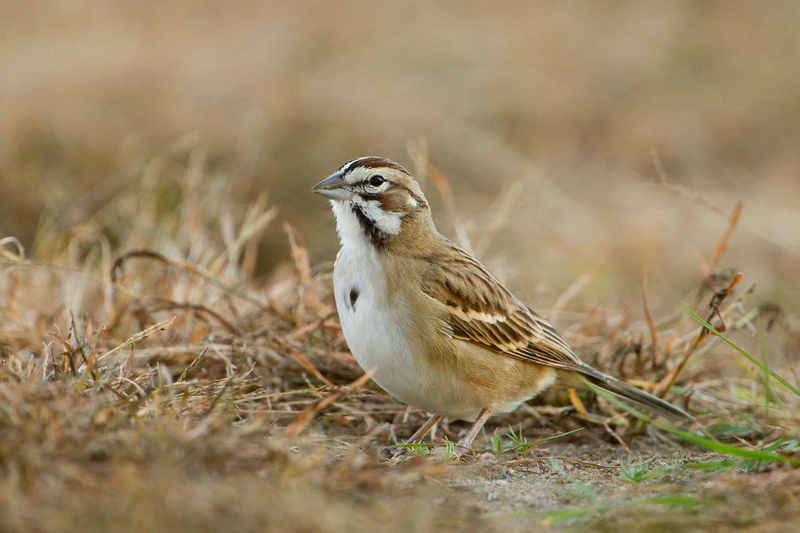

This mainly western species in a great example of the surprises that can show up in Connecticut during fall migration, and what makes it such an exciting time of year. Here's hoping there are a few more surprises to be found before the fall winds down.
IT'S BEEN A WHILE ...
After falling way behind on editing pictures and updating my website, I decided to take a break from my weekly blog posts to catch up in those areas. With the weekly routine interrupted, four or five months have quickly passed and I'm trying to figure out where to begin again. For starters, I'll say that I'm way off target for my goal (lofty as it was) of 300 Connecticut birds this year. I'm currently at 230, and that's after some pretty good ones recently. I'll be very lucky to hit 250, but really, I'm not terribly disappointed since I've had plenty to photograph this year.


One reason for the shortfall is that a some of the expected, but more difficult to find birds that I have seen in specific locations near my home the past few years, I didn't see this year. Among these are Virginia Rail, Least Bittern, Yellow-crowned Night Heron and Alder Flycatcher. It's pretty likely that I could have found them in other areas, but I decided not to chase them around the state (chalk it up to time constraints and high gas prices). A lackluster fall migration resulted in lower numbers of shorebirds, and I missed seeing Whimbrel, Red Knot and Buff-breasted and Stilt Sandpipers that usually are annual checks and Hudsonian and Marbled Godwit which are a little less regular. I also had bad luck and timing with some of the rarer birds, missing out on Pine Grosbeak, Wilson's Phalarope and a few others that I made the effort to see.
The main reason, by far, for missing out on many birds is the ever present conflict between birding and photographing. For example, I usually visit Bluff Point State Park in Groton several times each year during fall migration when the weather looks promising for the spectacular morning warbler flights. With thousands of birds pouring out of the woods, I'm usually focused on the lower branches for slow moving stragglers that I can photograph. I miss 90 percent of the sightings birders identify with fleeting glimpses as they fly past, but do see some nice birds that linger in the trees although I rarely get any great pictures. This year, I didn't visit Bluff Point at all, opting for greener photographic pastures instead. As a result, I missed seeing Philadelphia Vireo, Tennessee, Nashville and Wilson's Warbler that I see almost every year there. Below is a selection of photographs from past years at Bluff Point.
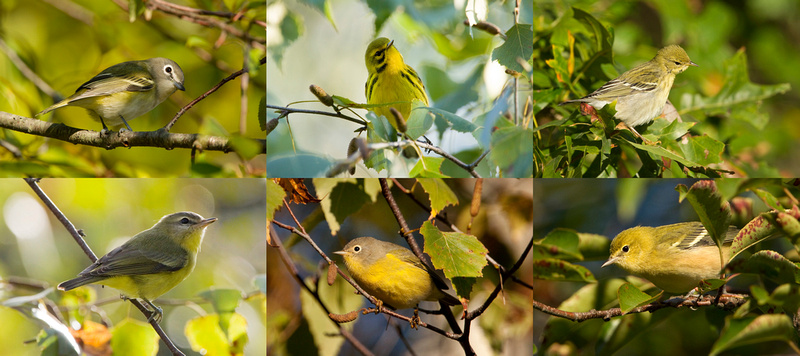

So, on to the positives. I'll try to quickly recap of the first few missing months, starting where I left off. After the rush of spring migration, I usually turn my attention birds breeding in Connecticut, and spend a lot of time in the woods looking for bird nests. It's generally hard work since most birds do their best to keep their nests well hidden, but I usually find a handful each year. Of those, I'm lucky to find one or two that can be photographed without disturbing the nest or surrounding area too much. This is a delicate subject, but I try to be extremely careful and usually pass on any nest that can't be photographed from a distance and without disturbing the birds or the habitat. In March, it looked like my nest finding was off to a good start, when I found a pair of Red-shouldered Hawks building a conspicuous nest near the main road in a busy park.
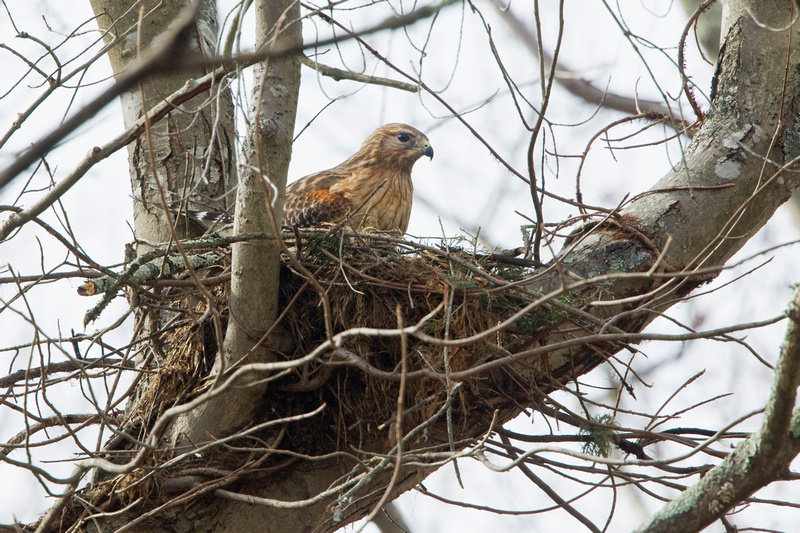

I usually don't photograph birds at their nest until they are feeding chicks, since the risk that they will stay away or abandon is smallest then. But after seeing many walkers staring at the vocal hawks and fearing that the heavy human and dog traffic might force them to move the nest, especially as the weather warmed, I decided to try to get a few shots one morning. I was able to find a fairly clear view from across the road and photographed the male hawk bringing sticks to the nest. One trip it returned to the nest with a frog, then flew back into the woods with it a hundred feet or so and presented to the waiting female before mating with her.
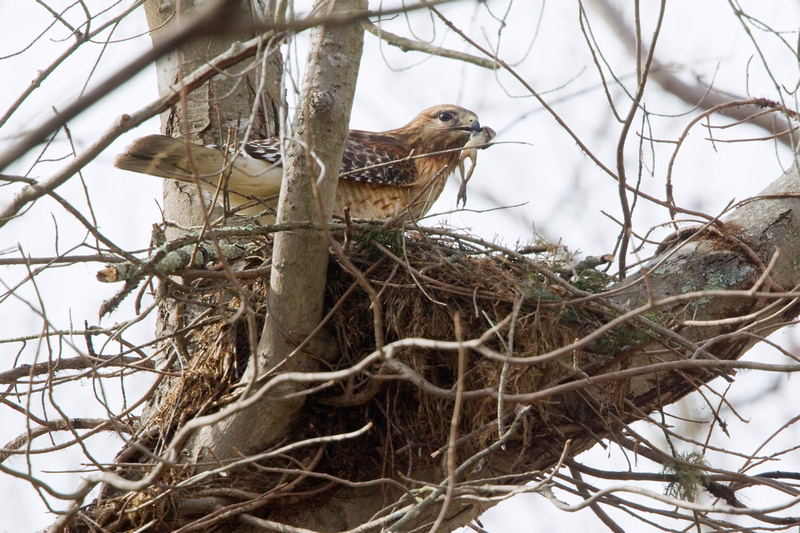

I checked the nest each time I drove past but eventually stopped seeing the hawks there, although I could hear them somewhere near by. I should have guessed that the situation was too good to last. After the trees leafed out the nest was completely obscured by the foliage anyway. In June I found another Red-shouldered Hawk nest in Lyme in a much taller tree, and was only able to find a narrow window where two of the three chicks were visible.
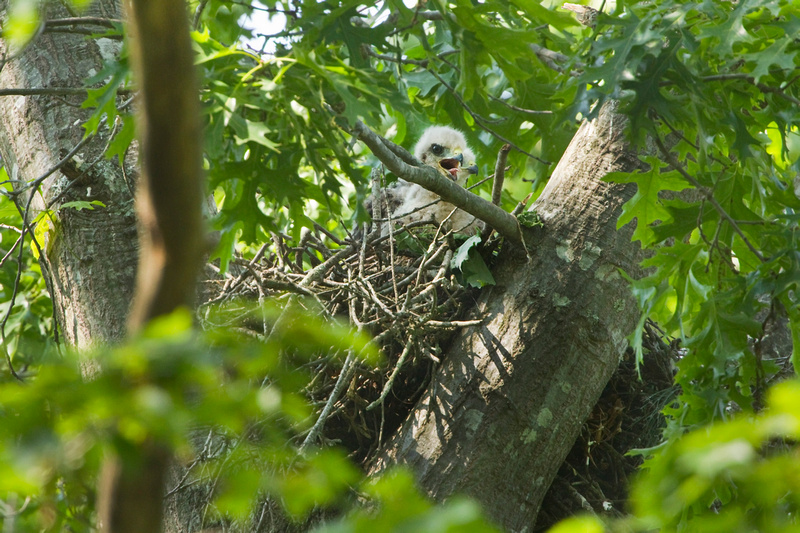

It turned out that I didn't have too much luck finding nests this season, and didn't find a single songbird nest in the woods. I did find a few nests in open marsh areas including a Marsh Wren nest, a huge tube of woven reeds, that I decided I couldn't photograph without impact. I did photograph a Red-winged Blackbird nest in a cattail marsh.
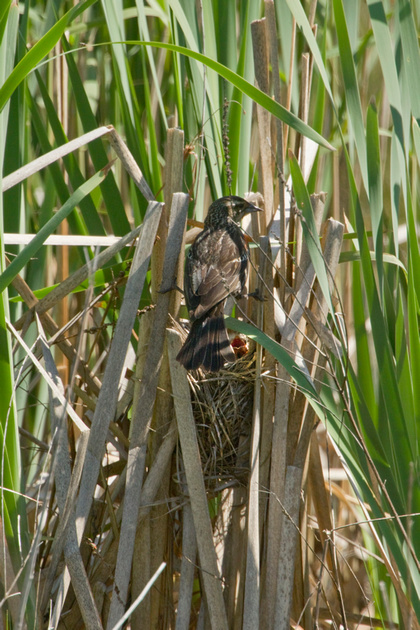

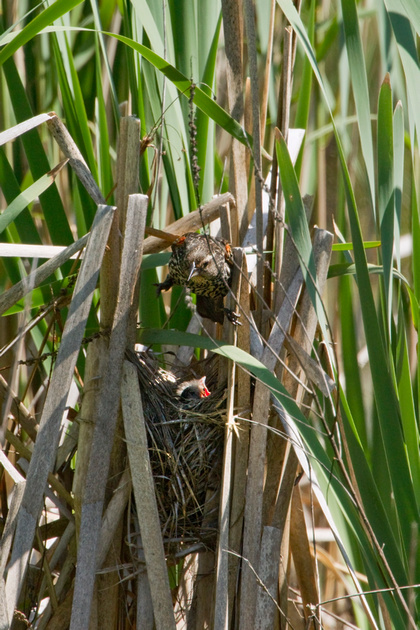

... and a very low hanging Baltimore Oriole nest in a short tree growing in another marsh. While the nest looked very promising, the orioles always took a back door route into the nest, limiting the picture possibilities.
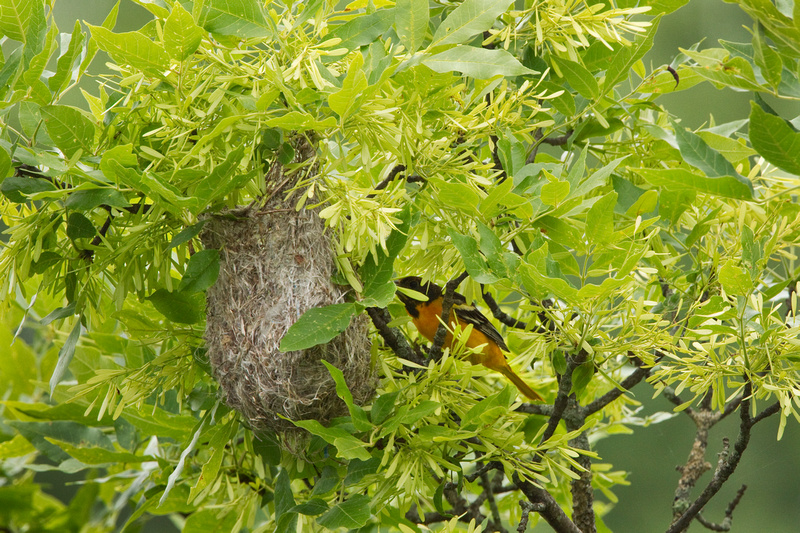

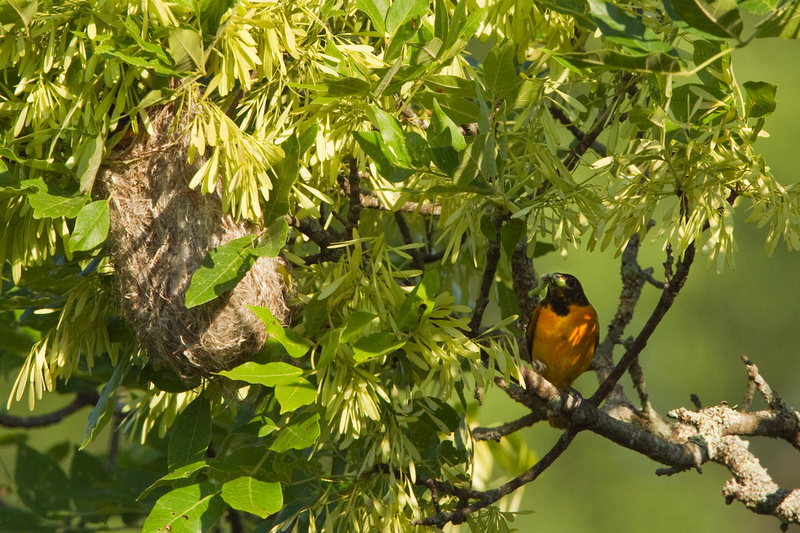

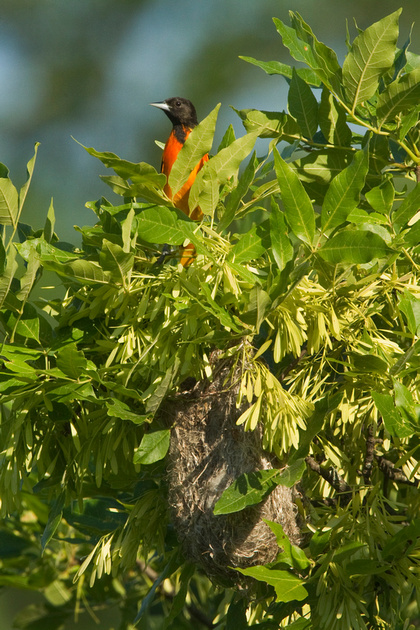

Looking to work on areas of different habitat, I went the northwestern part of the state looking for grassland birds, and was able to find some Bobolinks near their nesting area.
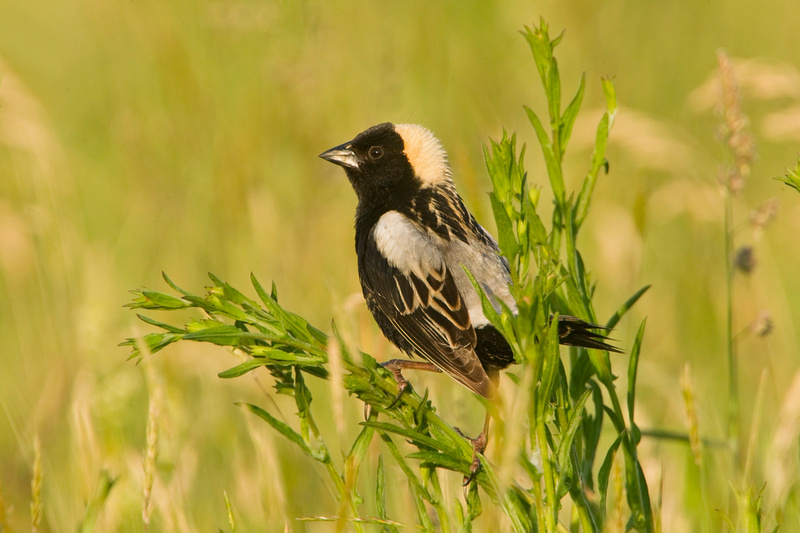

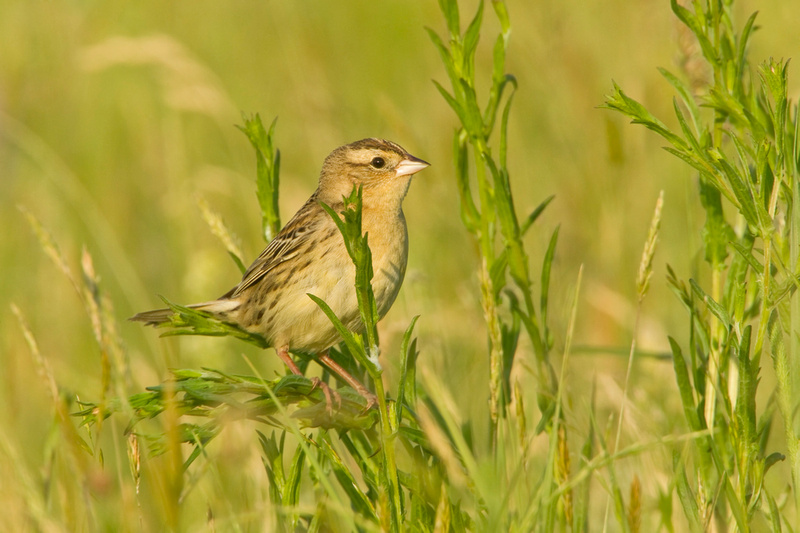



I also found Cliff Swallows flocking to the same small puddle to collect mud to build their nests under a nearby bridge.


Most of the birds got along just fine, but occasionally a skirmish broke out .....
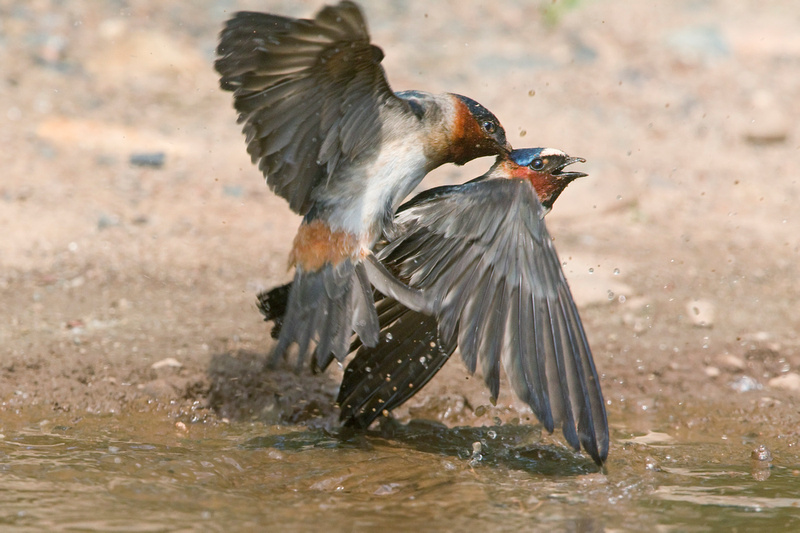

..... resulting in swallow mud wrestling matches.
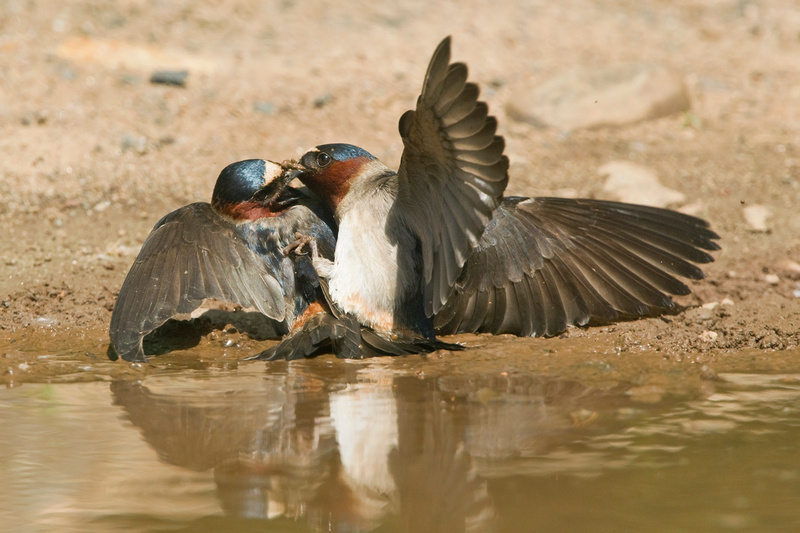

Closer to home, I spent some time checking the shoreline for birds nesting in the salt marshes. It seemed that fewer Osprey nests had chicks this year, or were well behind their normal schedule. Many platforms were damaged by the hurricane last October, and I saw many Osprey still carrying sticks to their nest well into July. Perhaps that affected their nesting schedule this summer? I saw a lot of Willets, often chasing around the marsh in noisy flocks, but did not see any chicks this year.


It was reported to be a down year in Connecticut for nesting terns, so I decided to visit a large skimmer and tern colony in Long Island. There were many American Oystercatchers, Black Skimmers and Common Terns still feeding chicks well into August and the beach goers, birds and birders all seem to get along pretty well there.
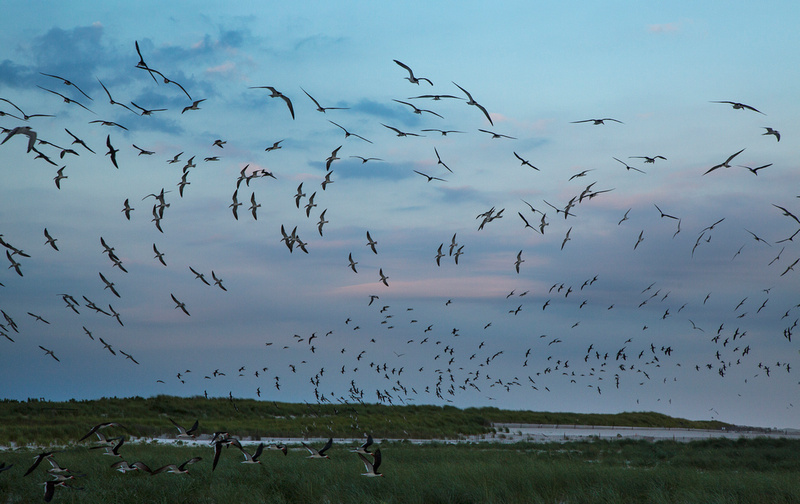







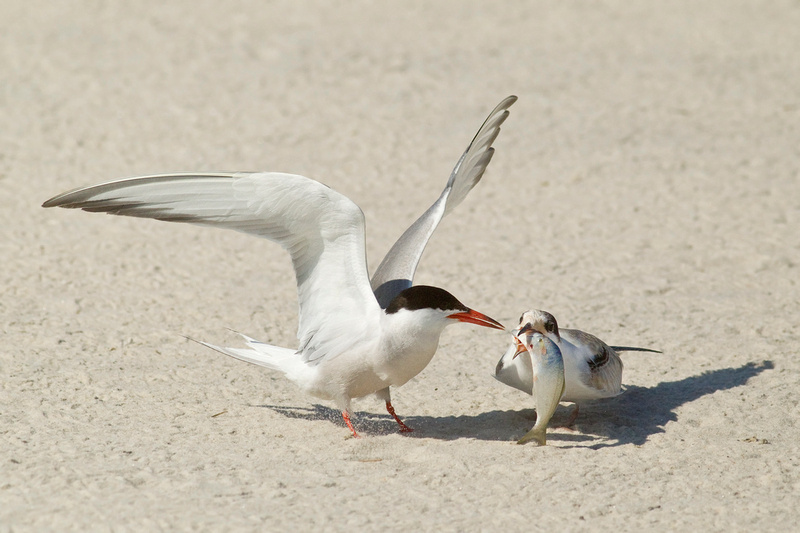



juvenile Common Tern (above)
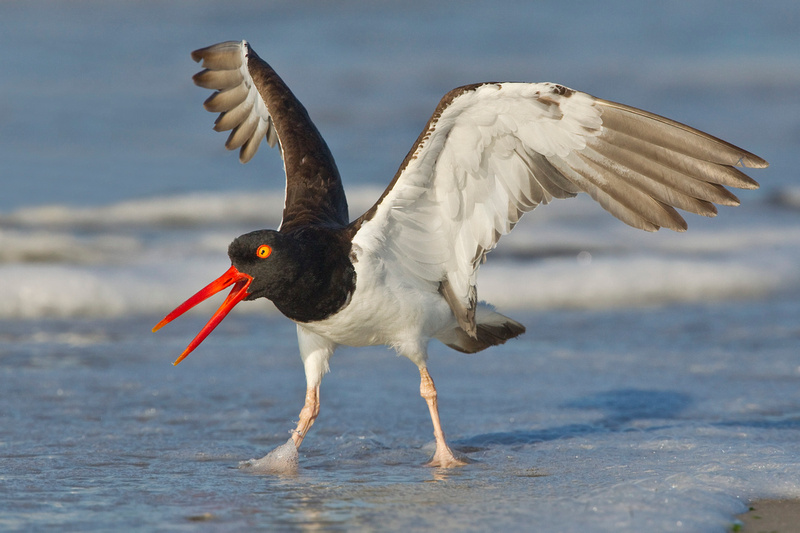


 American Oystercatcher adult (left) with juvenile.
American Oystercatcher adult (left) with juvenile.
So after wading through the thousands of pictures from the trip to Long Island and catching up on the stuff shot earlier in the summer, it was about time for fall migration to kick into full swing.
HIDDEN IDENTITY - PHOTO CHALLENGE
While going through thousands of images taken over the last month, I came across a bird that I could not identify. It was photographed at Hammonasset Beach State Park on May 14.
It's an Empidonax flycatcher that I thought was a Willow Flycatcher when I saw it, perhaps because they are resident birds, commonly seen and heard there in the spring and summer. The problem is that it wasn't singing, and I was busy trying to photograph it so I didn't study the details (not that I would be confident identifying it based on sight alone anyway). After reviewing the following two marginal images, I'm not sure the bird was a Willow Flycatcher. 

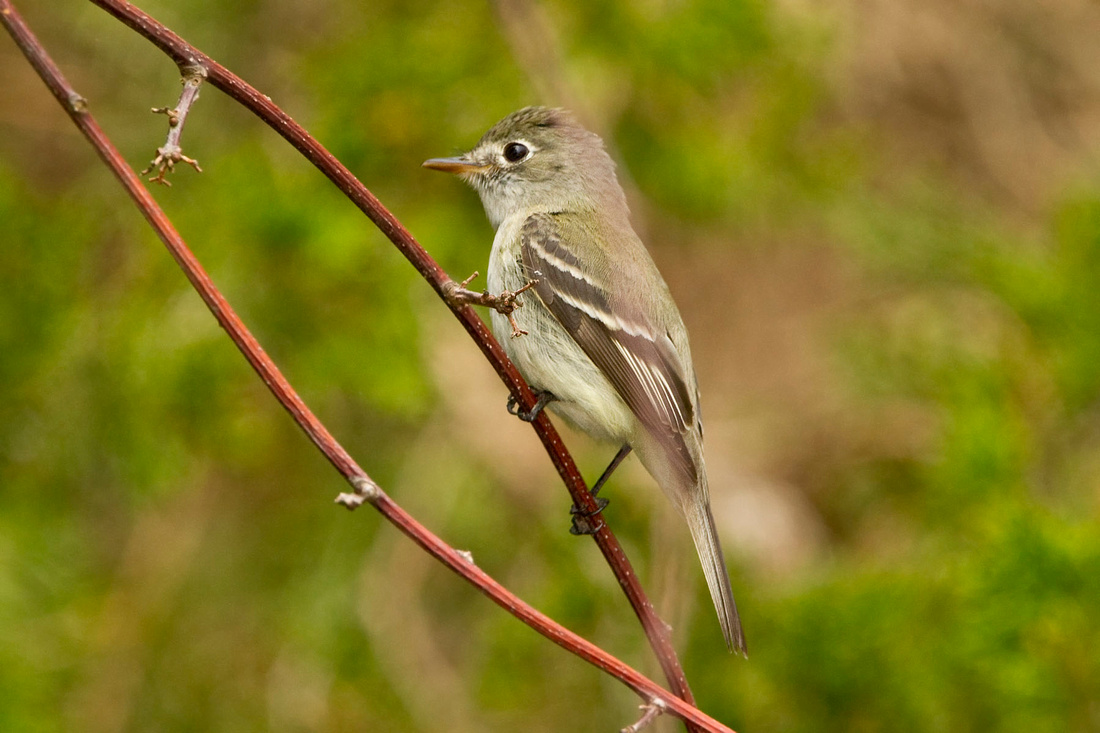

The bird in the picture has a brighter and more prominent eye-ring than Willow Flycatchers are supposed to. Based on field guide descriptions of the eye-ring, head shape and wing projection, I think Acadian Flycatcher can be eliminated. It looks a bit too elongated, with a longer bill than a Least Flycatcher, which leaves the Willow /Alder (virtually identical) Traill's Flycatcher conundrum. If anyone feels more confident calling it or has a better educated guess than I do, please let me know.
Here are some reference shots of the four species;

Acadian Flycatcher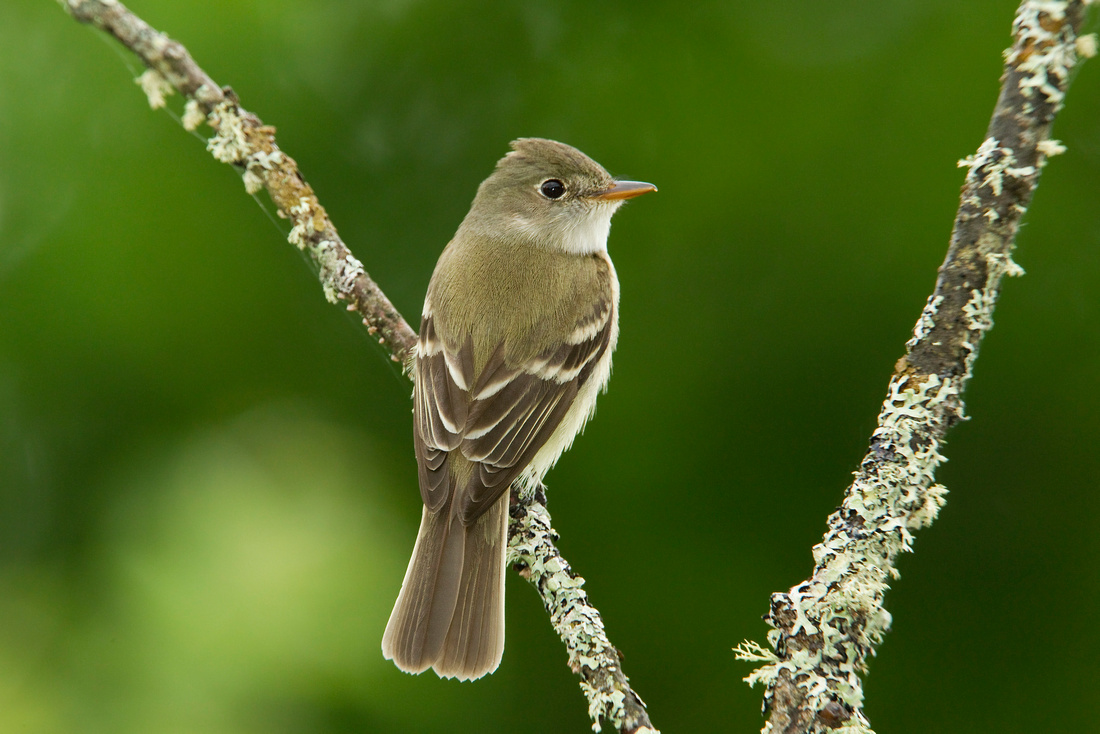

Alder Flycatcher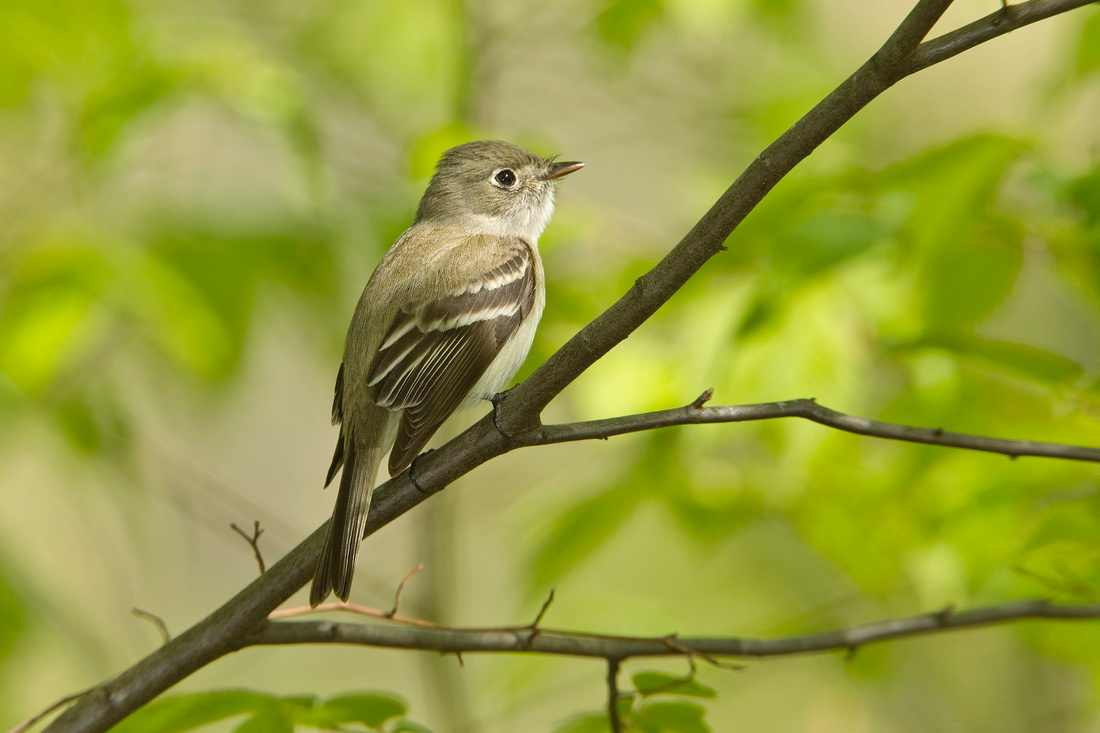

Least Flycatcher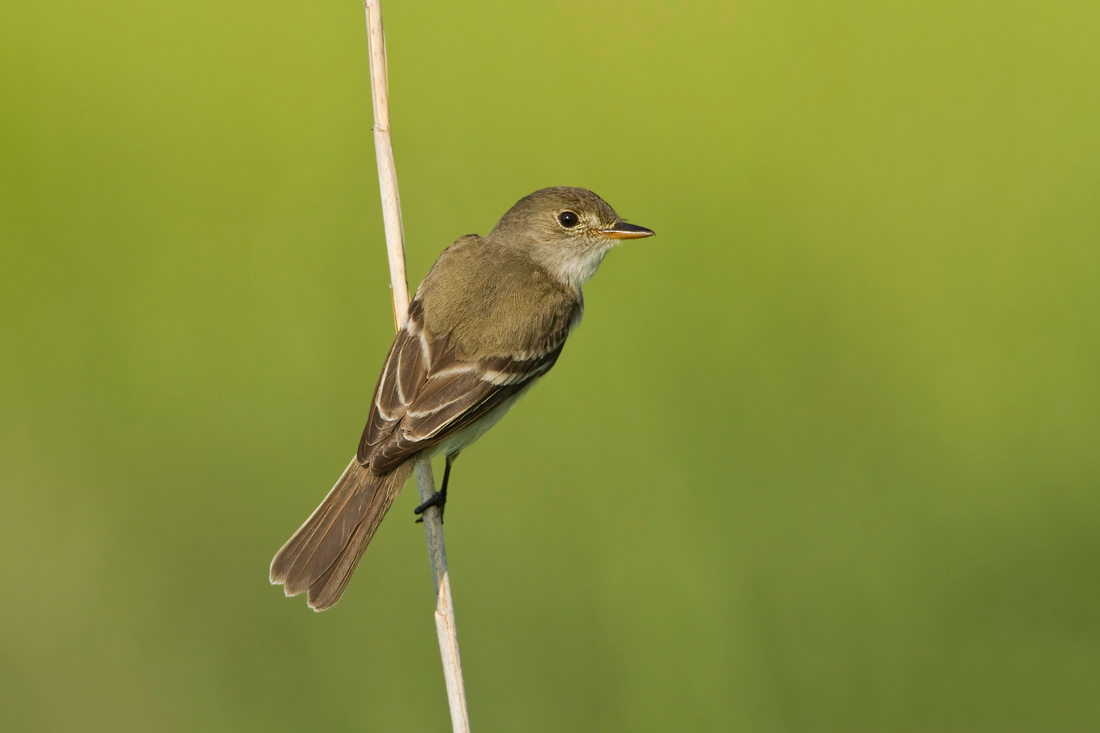

Willow Flycatcher
WEEKS 19 & 20 - MAKING HAY
I'm desperately trying to catch up on nearly two months of photos left clogging my computer, so the rainy weather this Memorial Day weekend is not all bad for me. With a steady stream of photography jobs this time of year, my kids, Maddy and Kyle, playing lacrosse (congats to Maddy and EL girls -ECC Champions) and so many birds (and other subjects) to shoot in a short window of time, something has to give. So the dreaded computer work gets left for last and starts to pile up, the tomato plants remain unplanted and my lawn is not looking its finest right now. But there's lot's to do and that's why it's such a GREAT time of year.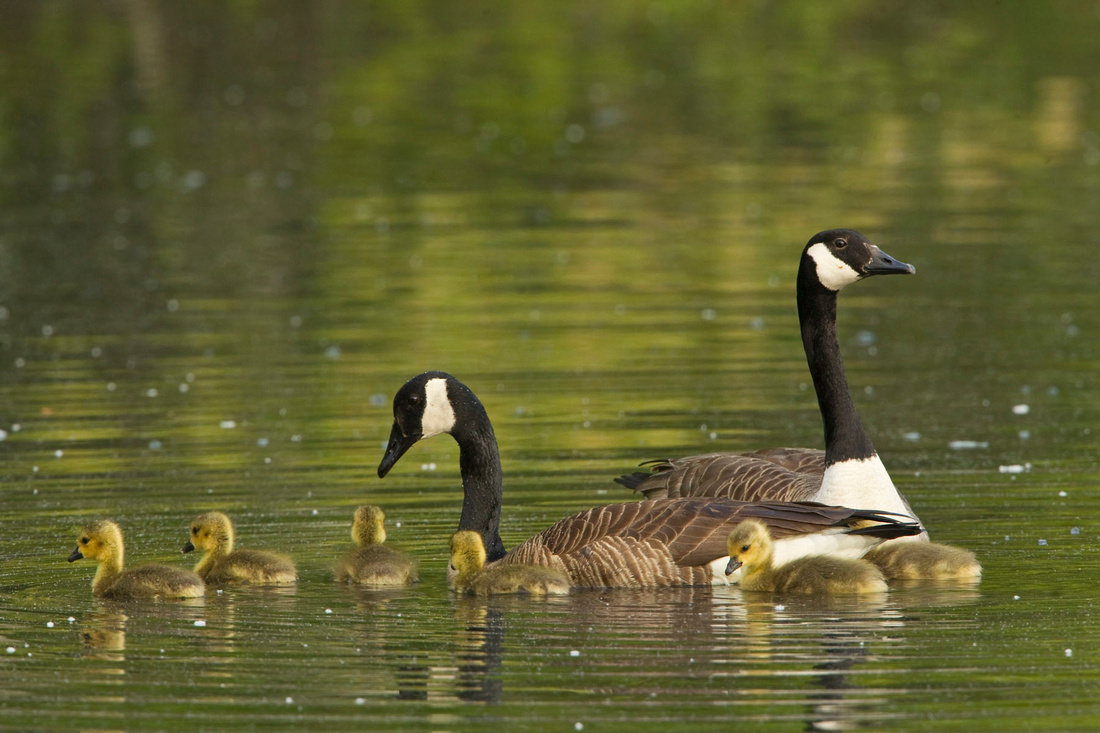

Weather-wise, there has been little rain this month, until the last few days, so there's always a draw to go out and photograph, to make hay while the sun shines. As I wrote in my last post, there are plenty of summer residents to capture as they return and set up territories to nest in different habitats. But one of the big draws of this time of year is to catch the migrants passing through on their way farther north, especially if you're hoping to see as many different species as you can. For much of early May, the weather was not great for migrating birds and some birders were saying it was the worst spring migration they had seen. I had not seen many migrants in the woods around southeastern Connecticut either, but a break in the weather pattern (away from the easterly flow) opened the flood gates and migrant songbirds finally began pouring into the state. Most of the big sightings were from New Haven west, but on May 16 at Hammonasset Beach State Park, I finally caught a good fallout day. I recorded 61 different species in one morning including a dozen different kinds of warblers foraging in the trees on Willard's Island.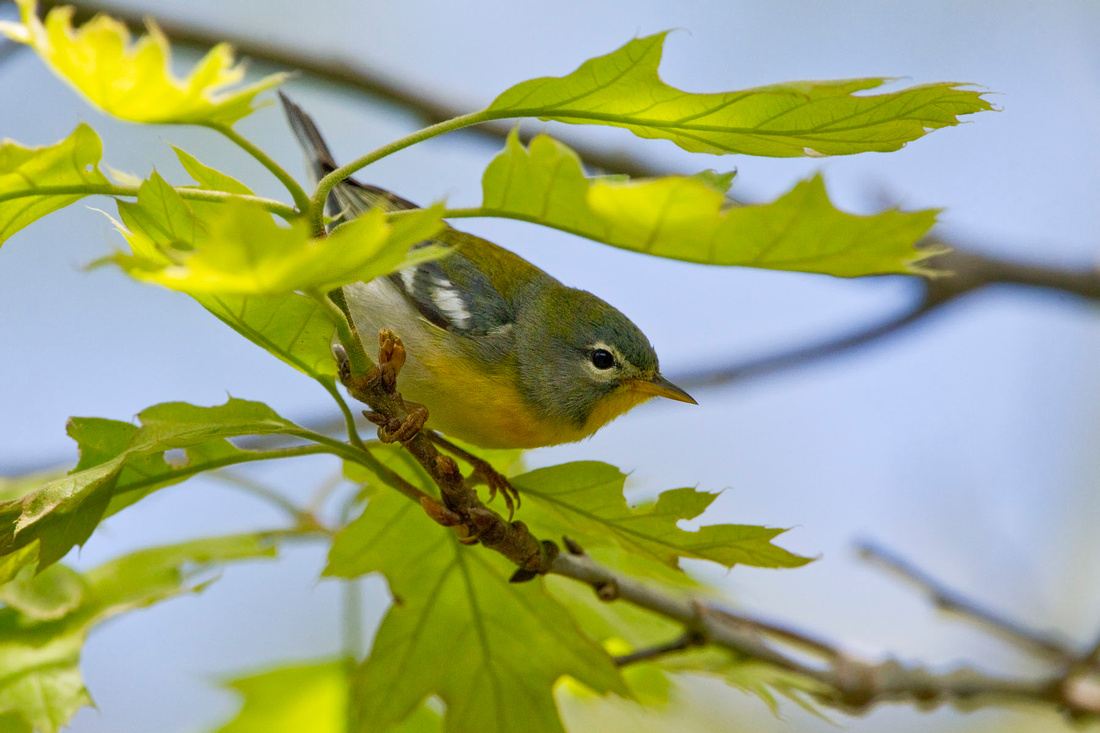

Many of these were migrants, passing through Connecticut on their way to nesting grounds in northern New England or Canada. Among them were many Northern Parulas (above), Blackburnian, Black-throated Blue, Canada, and Chestnut-sided Warblers. Most were foraging high in the trees, and were difficult to photograph, but it was great fun seeing so many different species and so much activity. As the morning wore on, some birds came down to feed in the lower cedar trees and provided a chance for some better photos. Most were Magnolia Warblers (2 below) that moved through the dense branches mercurially, and could pop out close by at any moment.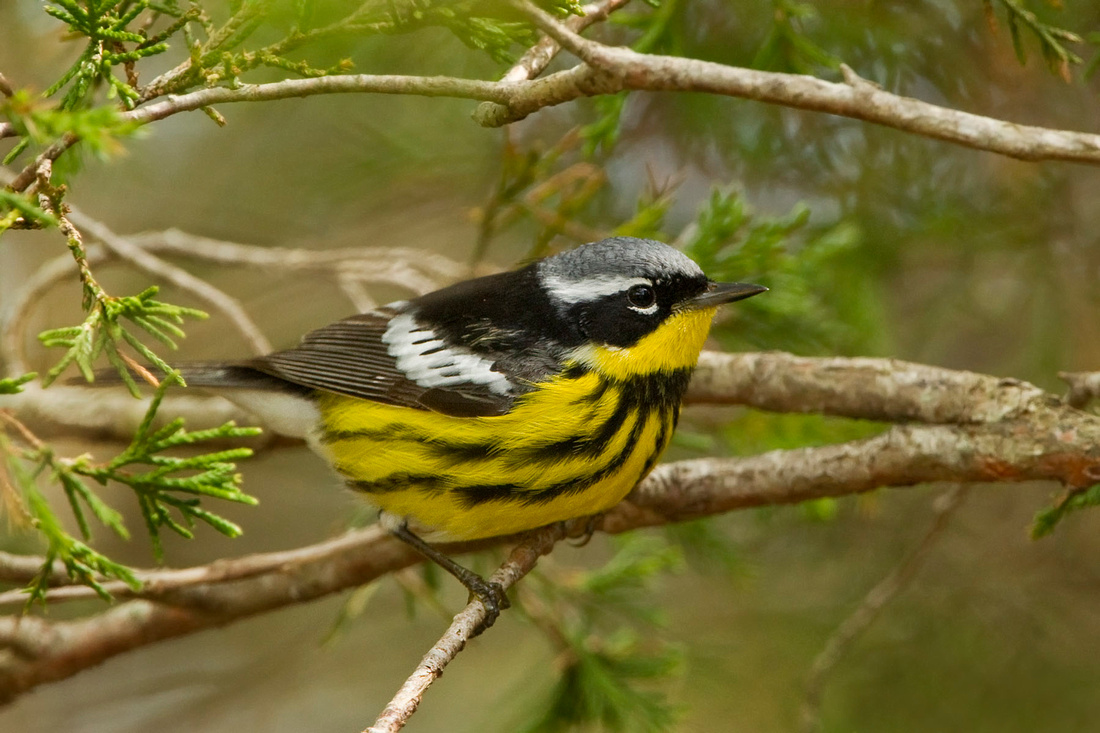

The trick was to be pointed in the right direction and prepared to get them before they flitted away to the next branch.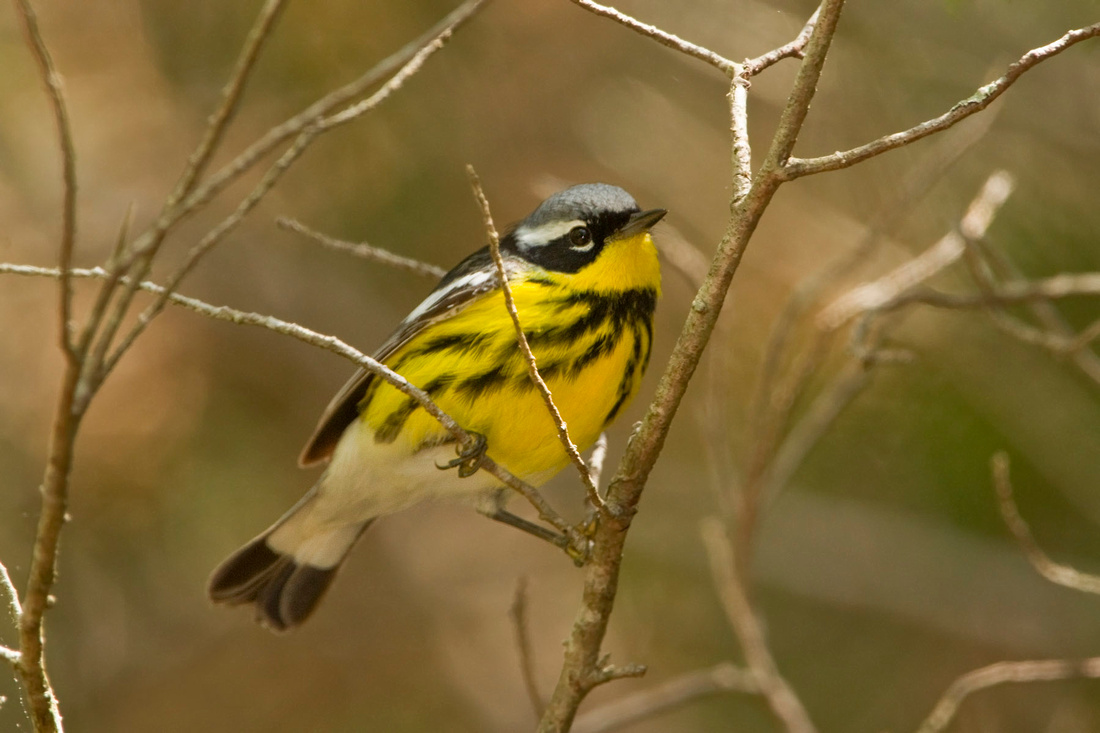
 The highlight of the morning was seeing the lone Bay-breasted Warbler (below) that was found. Spotted earlier in the morning by other birders, I saw it briefly in a cedar tree a while later, before it disappeared again. A short time later it was spotted again by Shirley and Charlie Rafford, as it worked its way methodically through a cedar branch along the pathway, and I was able to get a couple of record shots.
The highlight of the morning was seeing the lone Bay-breasted Warbler (below) that was found. Spotted earlier in the morning by other birders, I saw it briefly in a cedar tree a while later, before it disappeared again. A short time later it was spotted again by Shirley and Charlie Rafford, as it worked its way methodically through a cedar branch along the pathway, and I was able to get a couple of record shots.

Along with the migrant warblers, there were the omnipresent Common Yellowthroats and Yellow Warblers (below).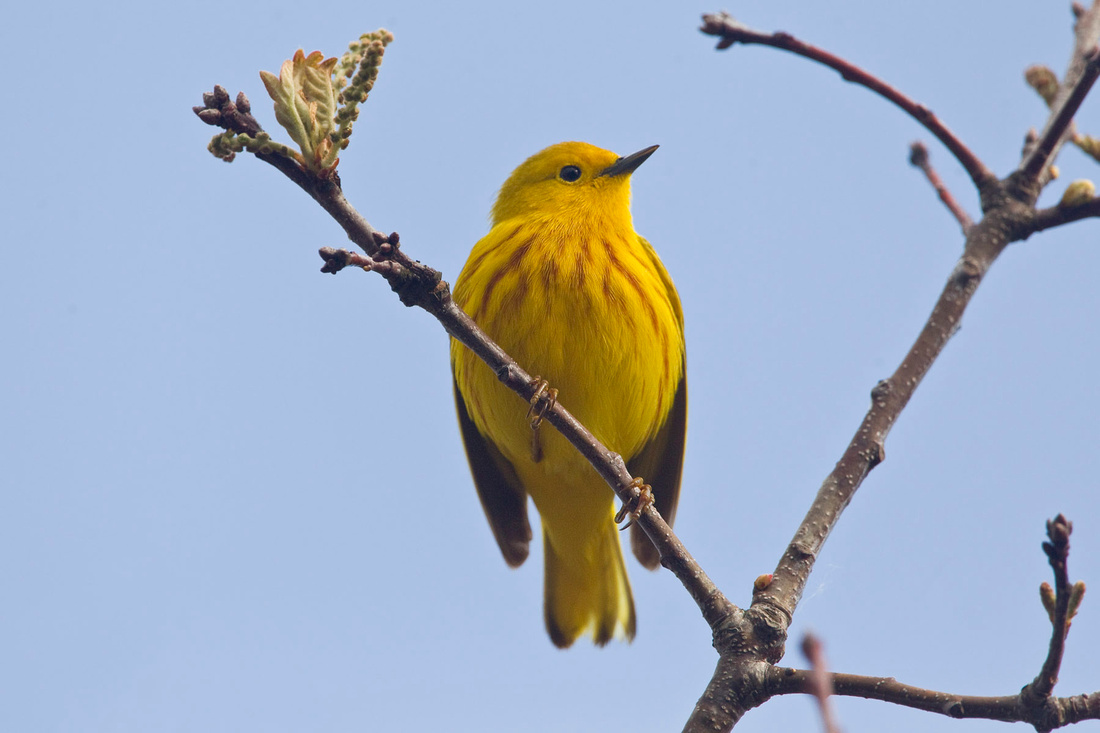

In the Hammonasset salt marshes, Willow Flycatchers, Marsh Wrens, Seaside and Saltmarsh Sparrows returned to their nesting territories. I spent some time photographing the herons and egrets because I usually don't visit the park for the rest of the summer after Memorial Day. A Little Blue Heron (below) put on a show, preening and ruffling its feathers,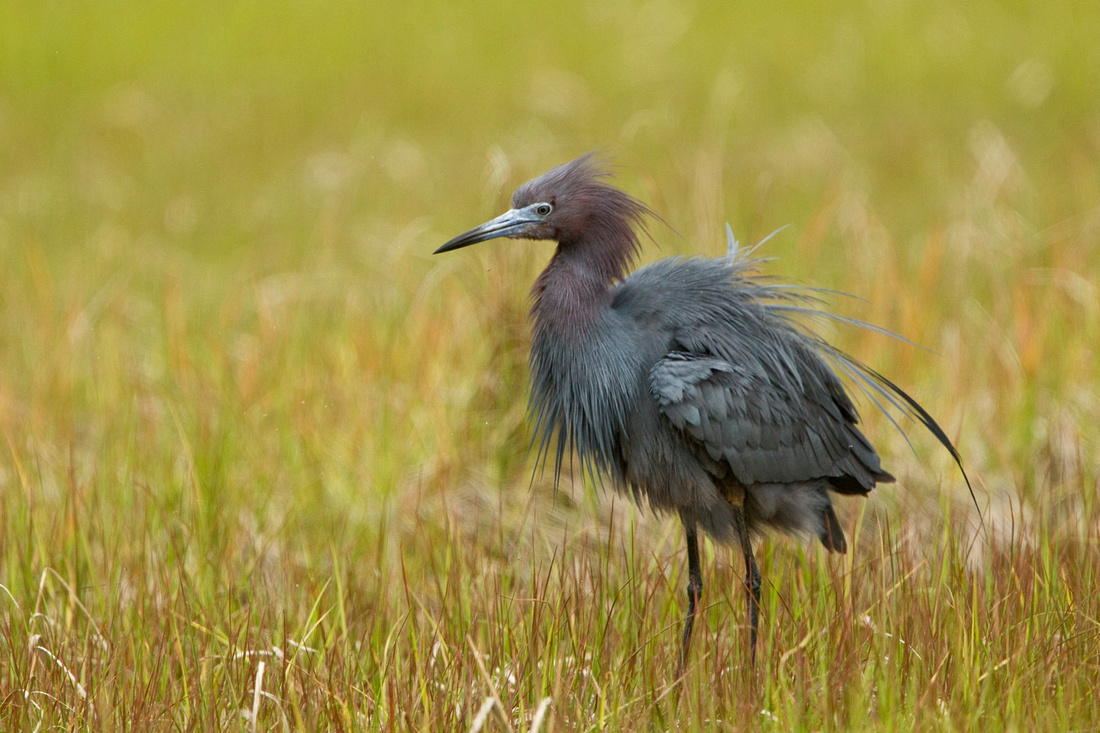

and then doing this weird gagging thing.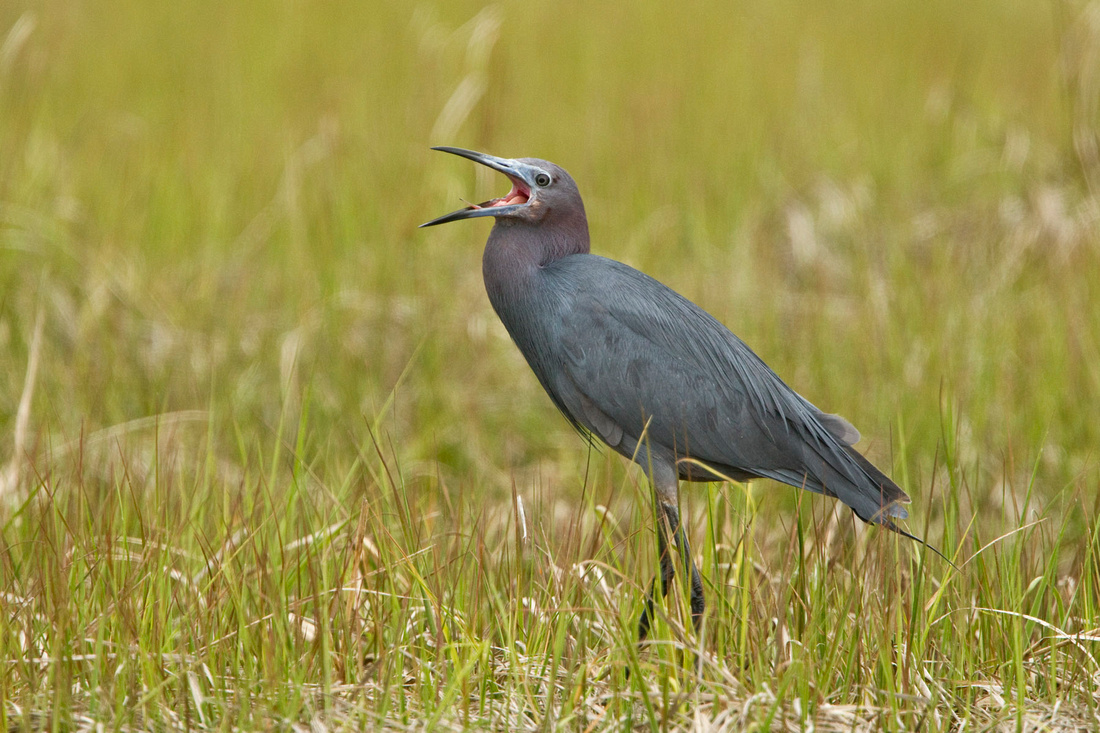

Nearby a Great Egret, patiently working a productive fishing spot, found itself repeatedly targeted by a Red-winged Blackbird. Perhaps it had strayed into the blackbird's nesting area.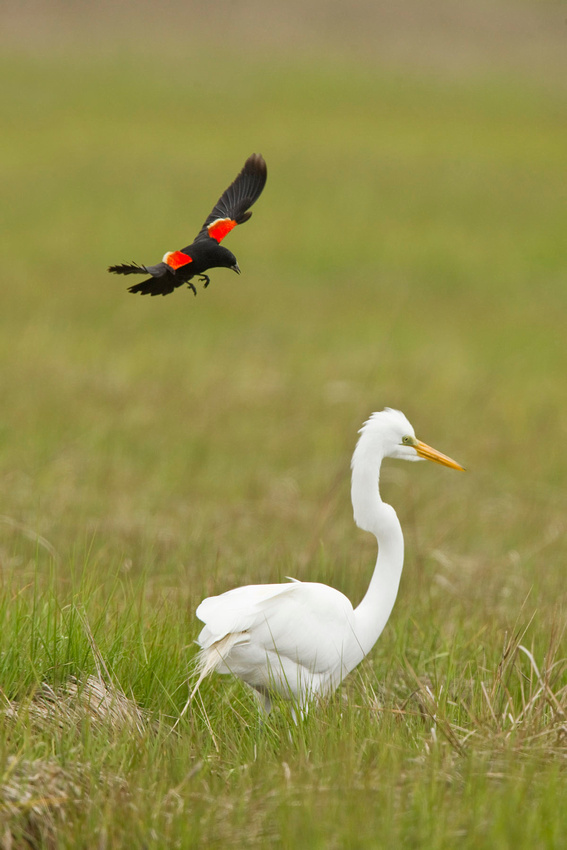

Another wading bird I wanted to see was the Cattle Egret spotted at the pond behind Cabela's in East Hartford. I missed the one seen in Portland earlier this spring. I drove up there early on a Saturday morning and could not find the egret. I went to look for Upland Sandpipers and Grasshopper Sparrows in the runway field, but before I could spot them the Cattle Egret flew in right past me and landed at the edge of the pond. I got a few backlit shots of the striking bird before it flew to the back edge of the pond.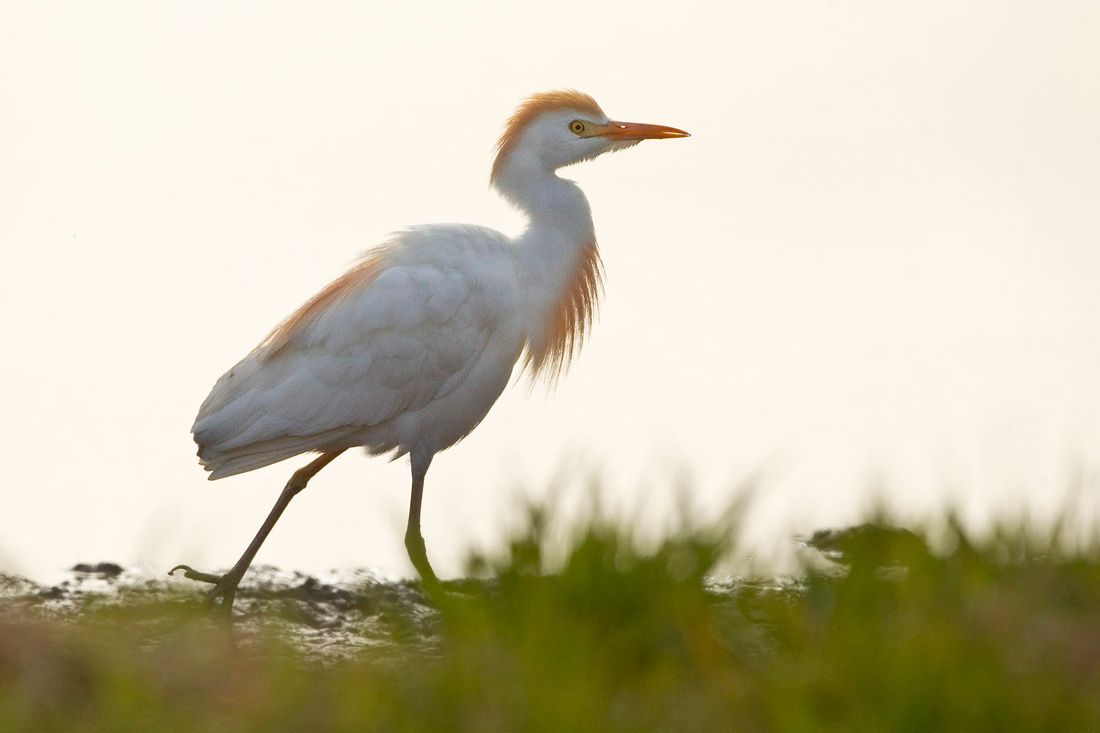

I went back and spent an hour searching the fields, seeing several Grasshopper Sparrows, Savannah Sparrows, Eastern Meadowlarks, a Bobolink and finally a distant and somewhat unsatisfying look at two Upland Sandpipers. The trip was a productive one though, as I saw four new species for the year. Before leaving, I stopped for one last look at the Cattle Egret and saw it emerge from the grass mound behind the pond with a vole, which it took a few minutes to gulp down.
The rest of the last two weeks I have been working to capture as many of the resident birds as I can, visiting a variety of different habitats for different subjects. In a cool Hemlock stand, I photographed Black-throated Green Warblers, (2 below)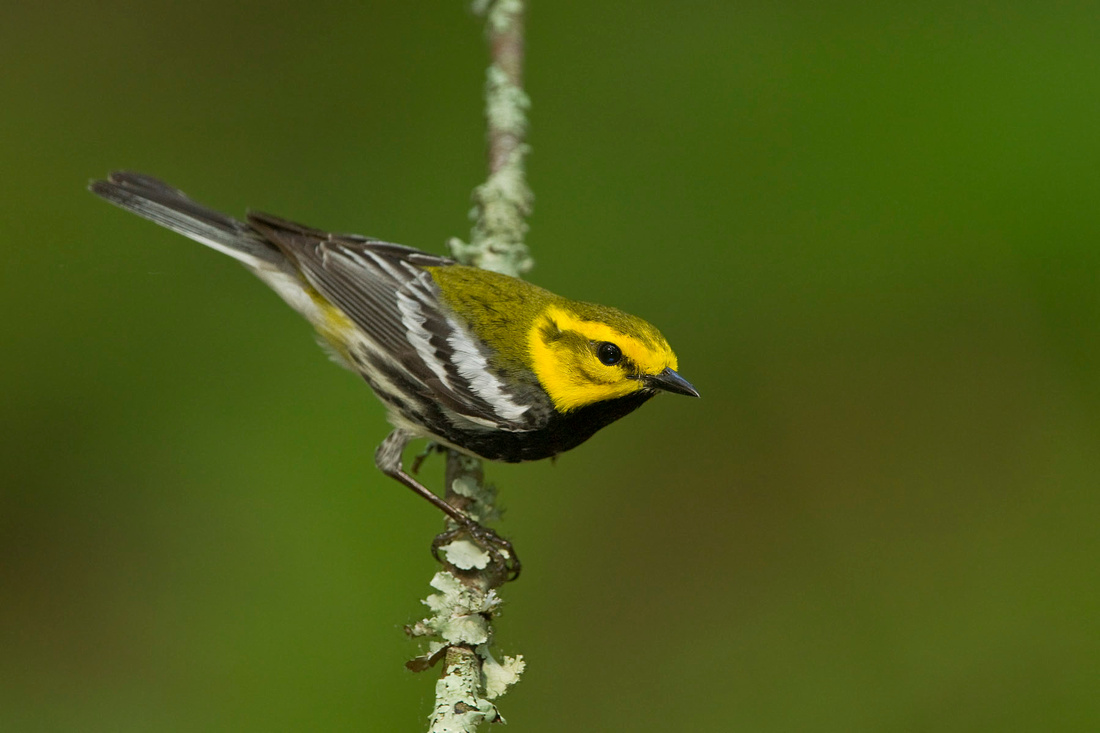

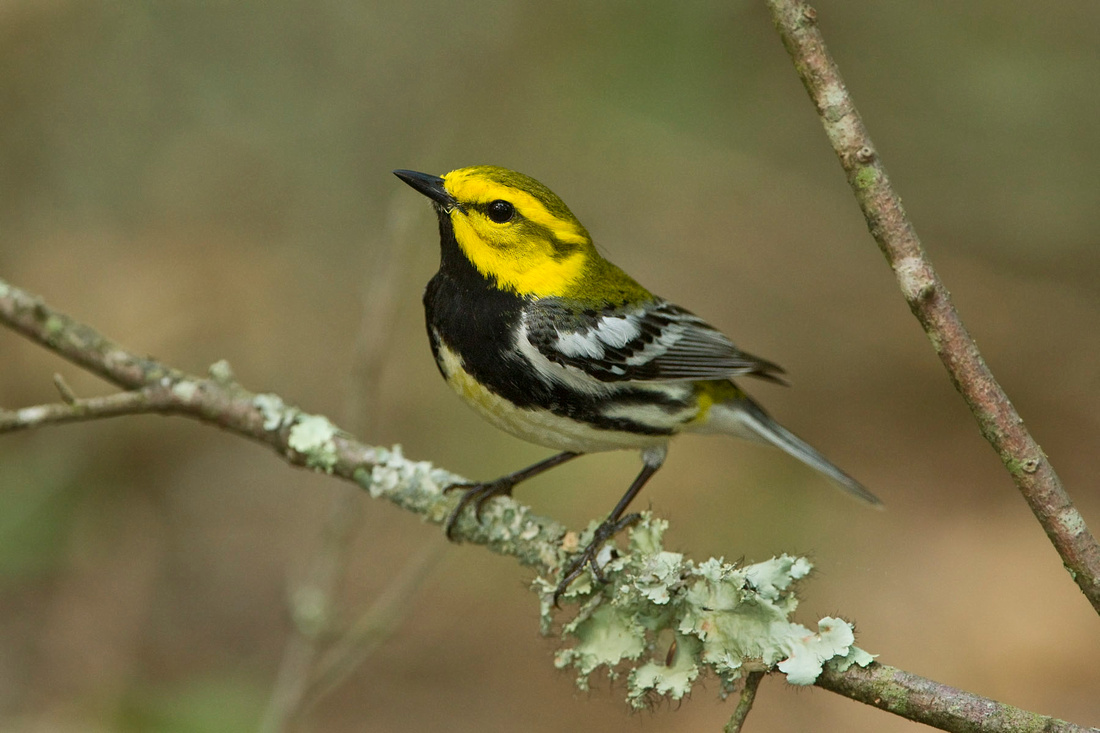

In deciduous woodlands, a brilliant Scarlet Tanager,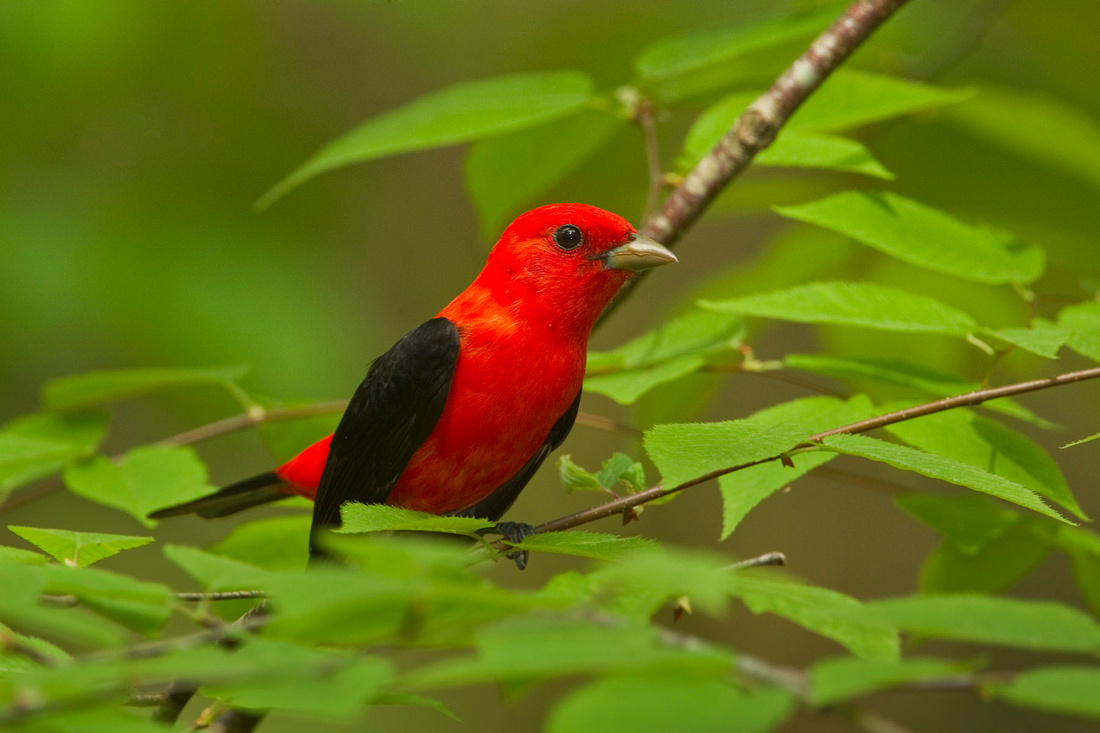
 and very vocal Red-eyed Vireos (2 below),
and very vocal Red-eyed Vireos (2 below),
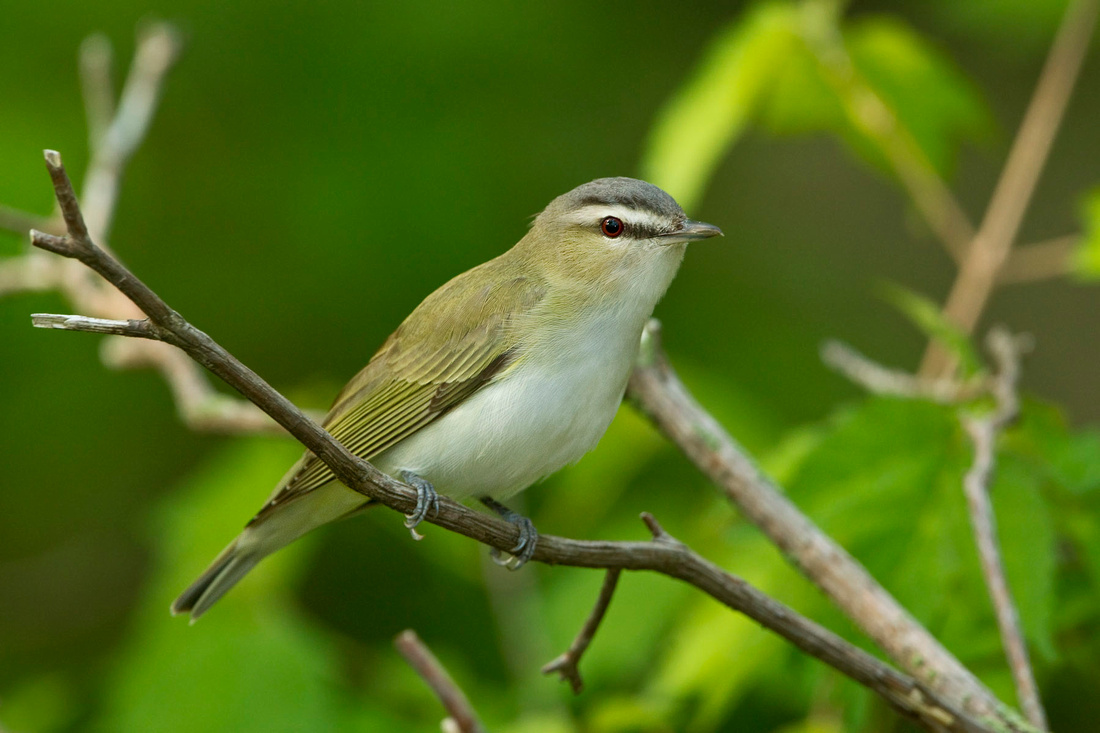

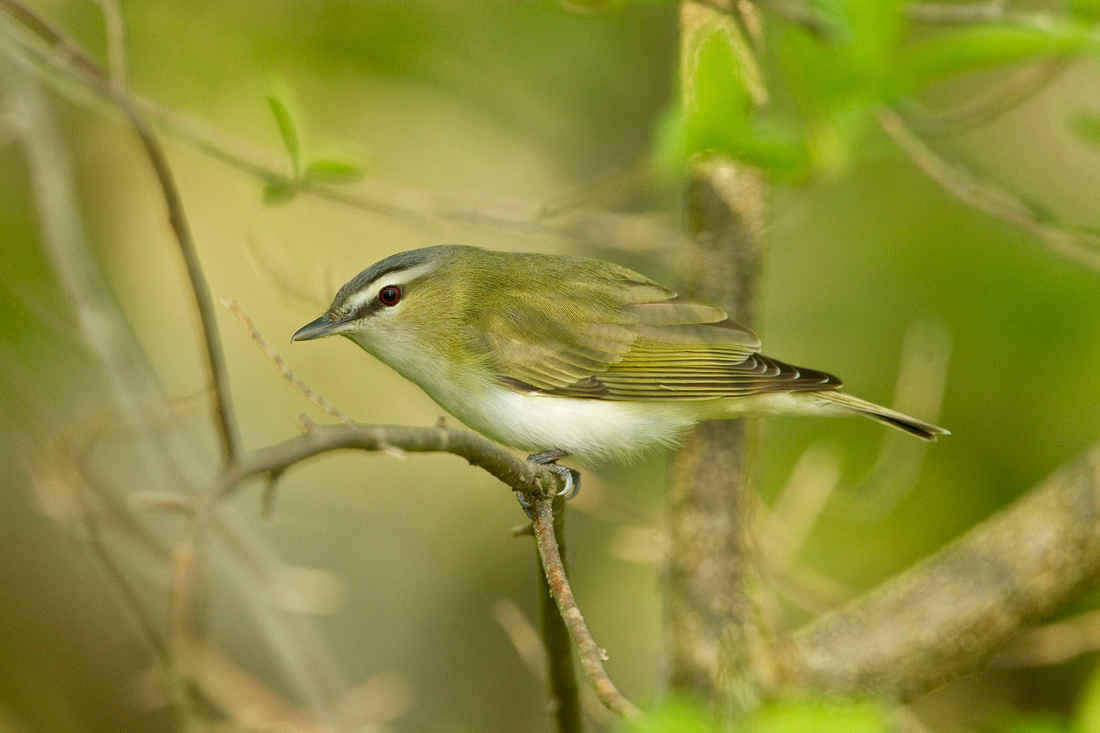

and Yellow-throated Vireos (2 below).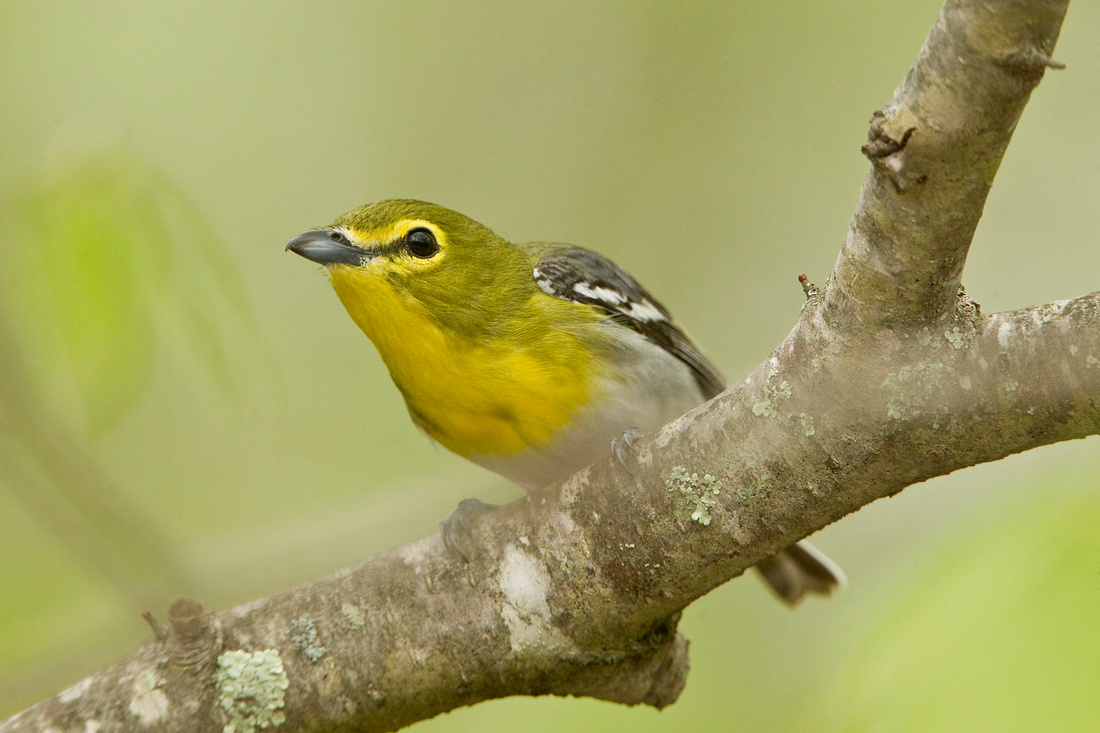



In brushy open areas, a White-eyed Vireo,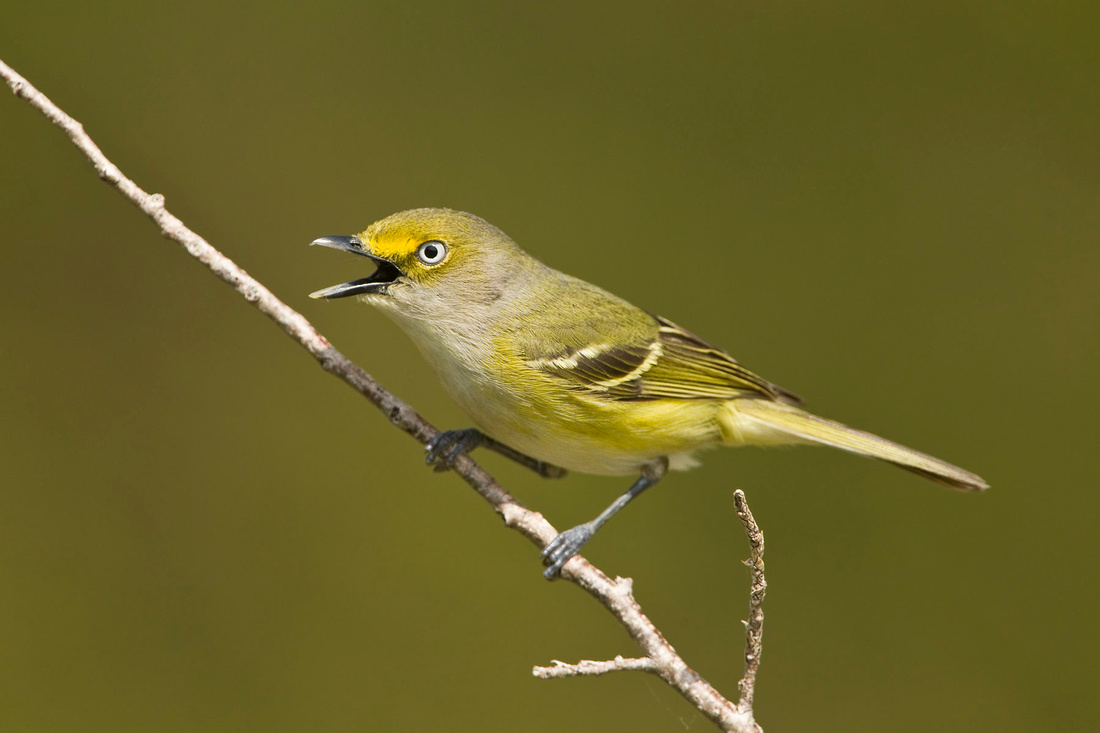

a Prairie Warbler
 Yellow Warbler,
Yellow Warbler,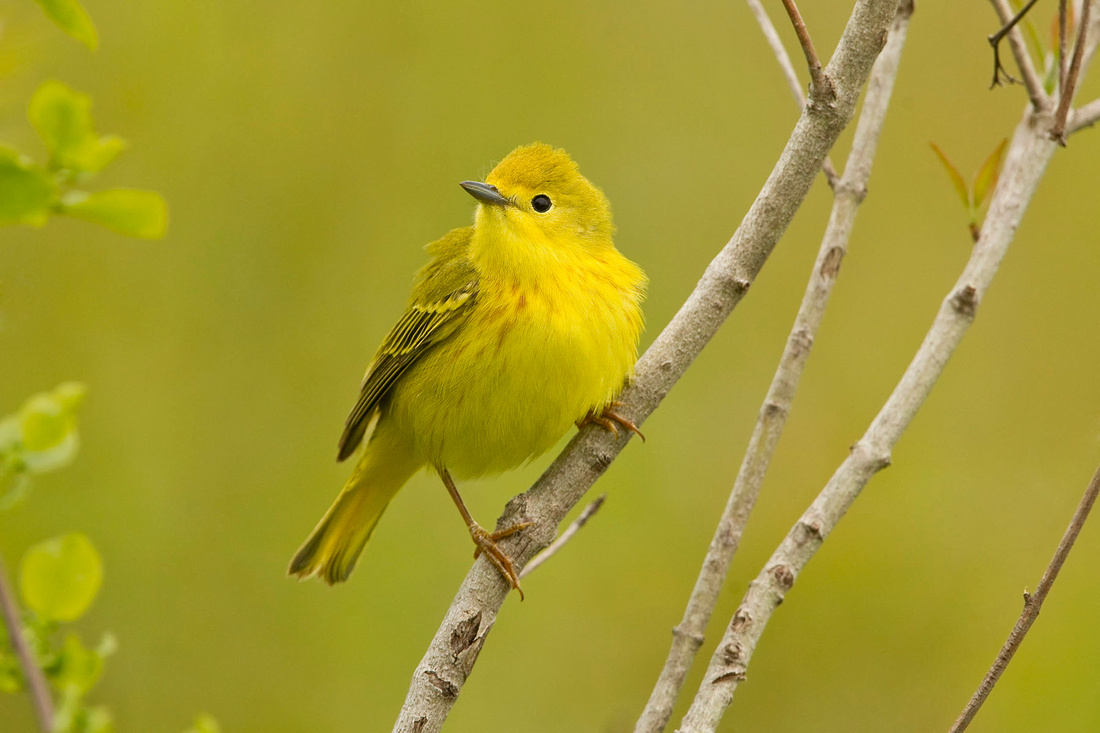

and a Common Yellowthroat.

Also in brushy openings along two different woodland edges I saw cuckoos, Black-billed Cuckoos at Walden Preserve,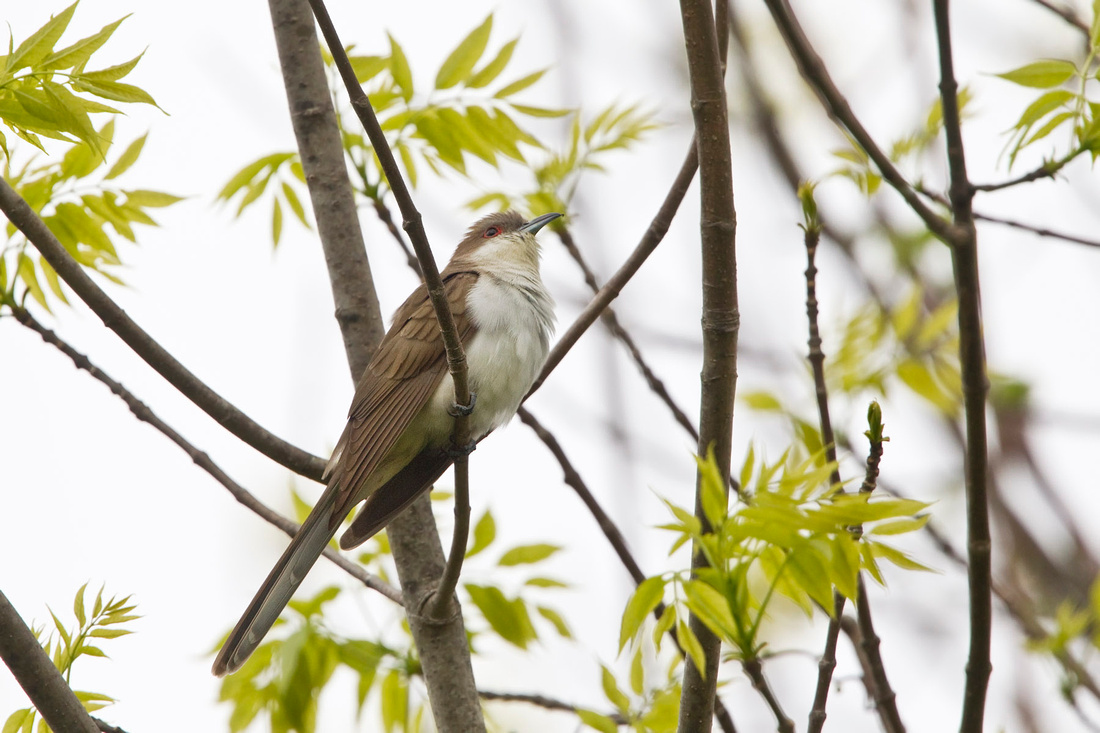

and a Yellow-billed Cuckoo, at Hartman Park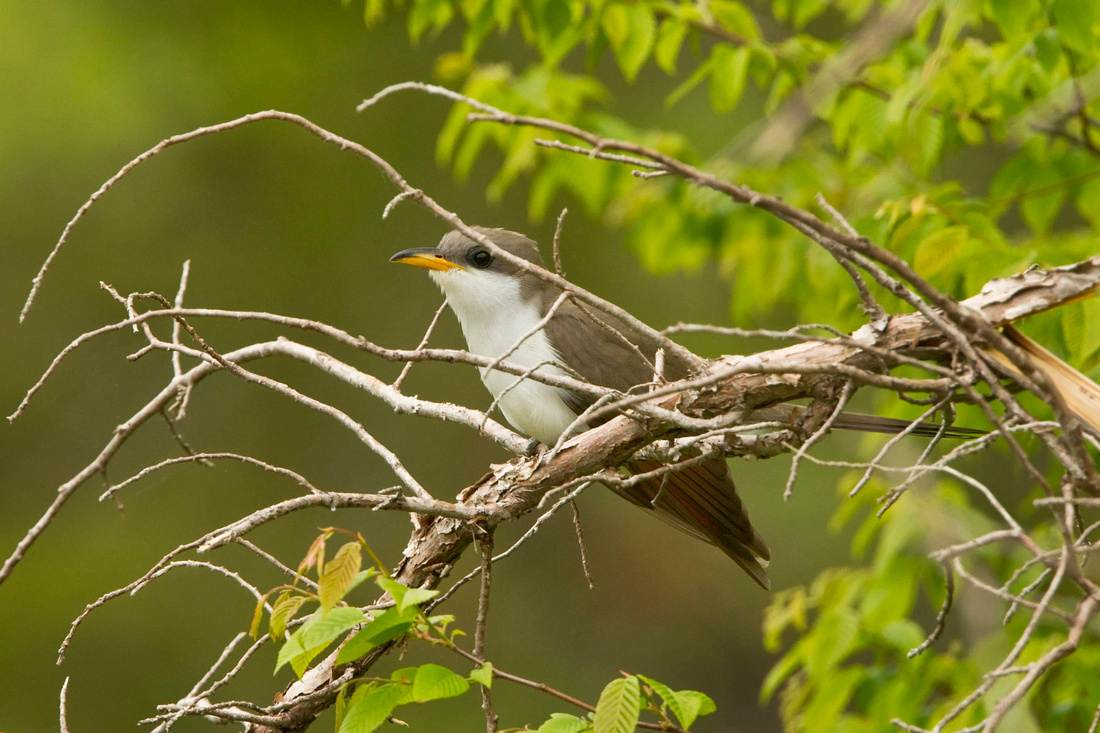

both species near webs of tent caterpillars, which are apparently a favorite food source for cuckoos.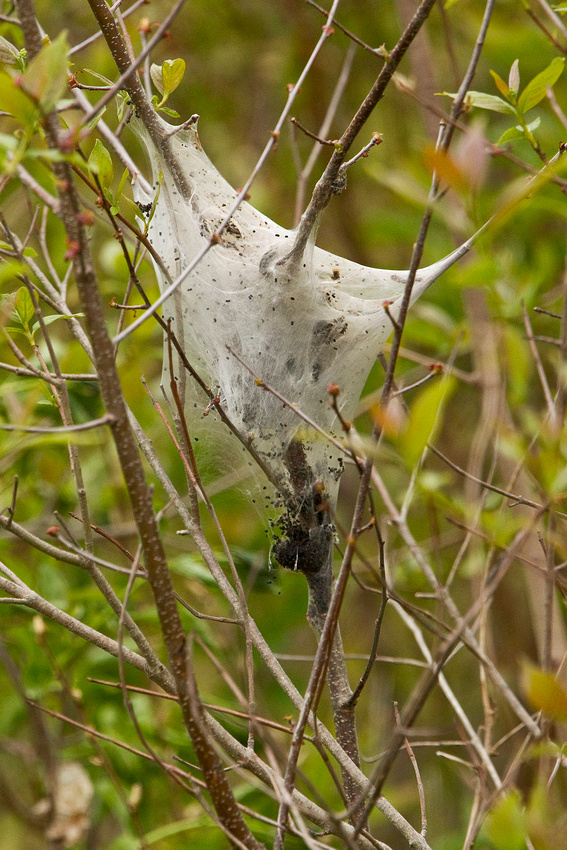

Also in similar habitat, I watched a female Baltimore Oriole gathering vine fibers for its nest,

and a Great-crested Flycatcher working along the woodland edge.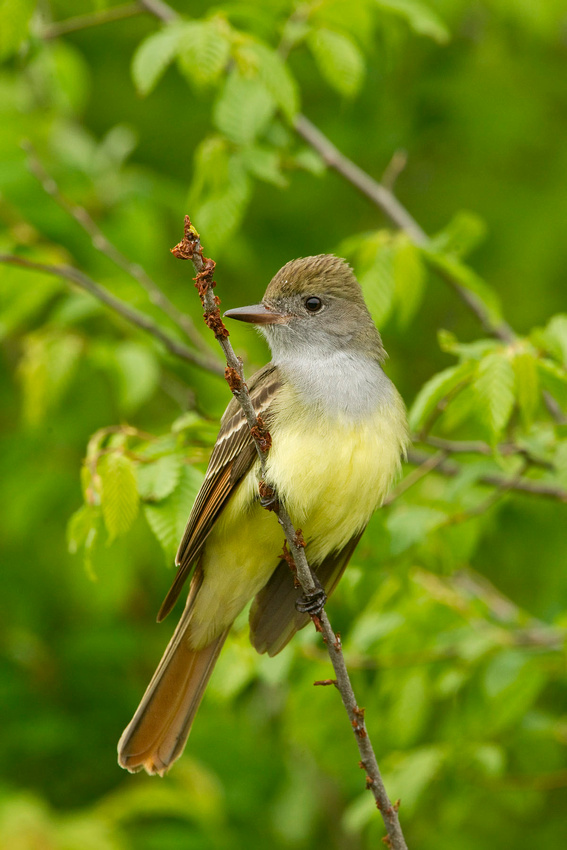

And along the edges of salt marshes, Willow Flycatchers returned, singing their distinct song and revealing their true identity (see my next post to find out why).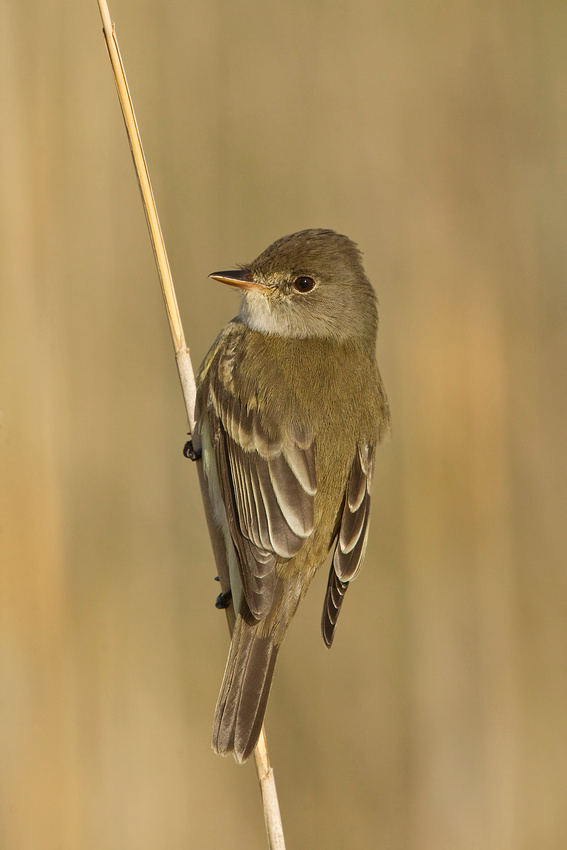

And finally, while watching my son's lacrosse game last Saturday, one of the parents looked up and spotted a sun halo, formed by ice crystals in the atmosphere creating a reflected ring of light at 22 degrees around the sun, (thank you Mr Science!) and everyone's eyes and phone cameras were trained skyward. In keeping with my bird theme, I captured a crow (no, I don't know which kind) flying through it. Just making hay while the sun shines.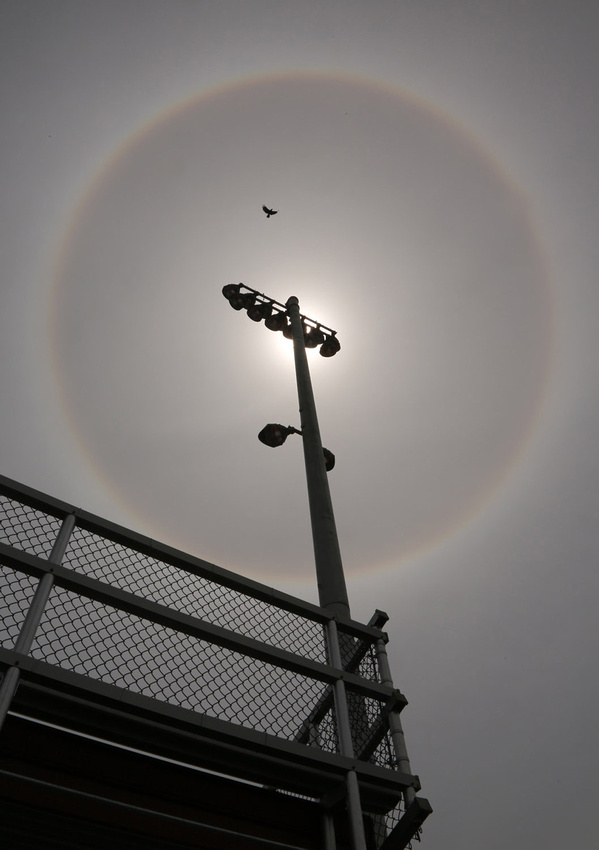

My sightings list is up to 210 species as of May 24, and I still have quite a few easy ones left.